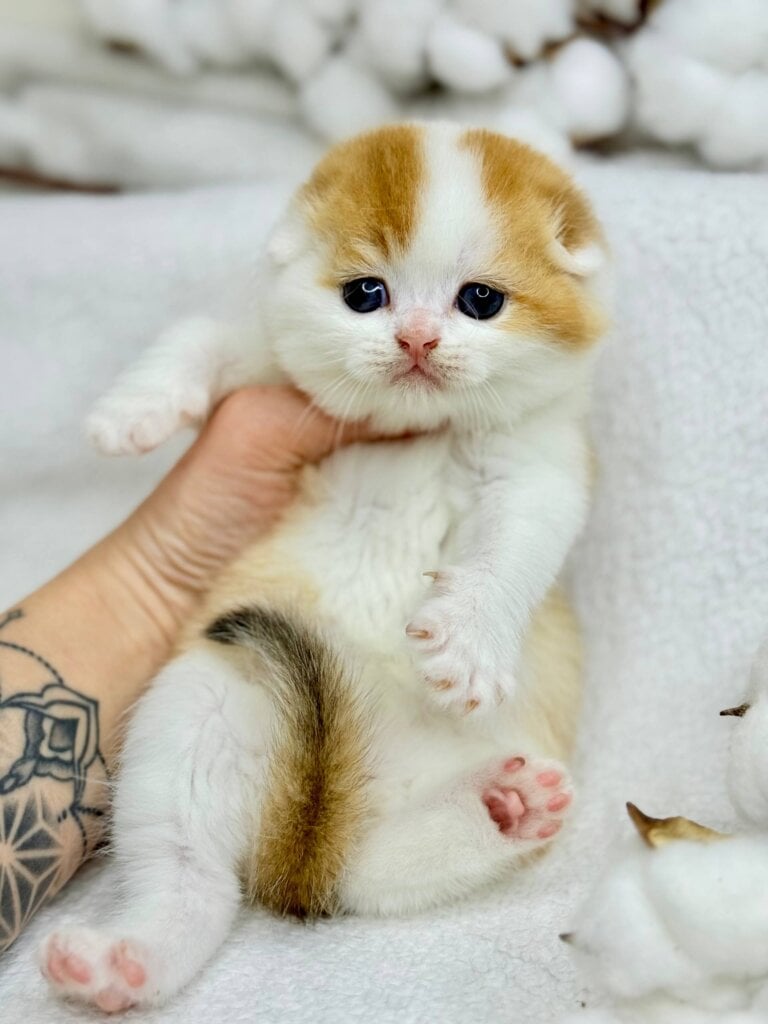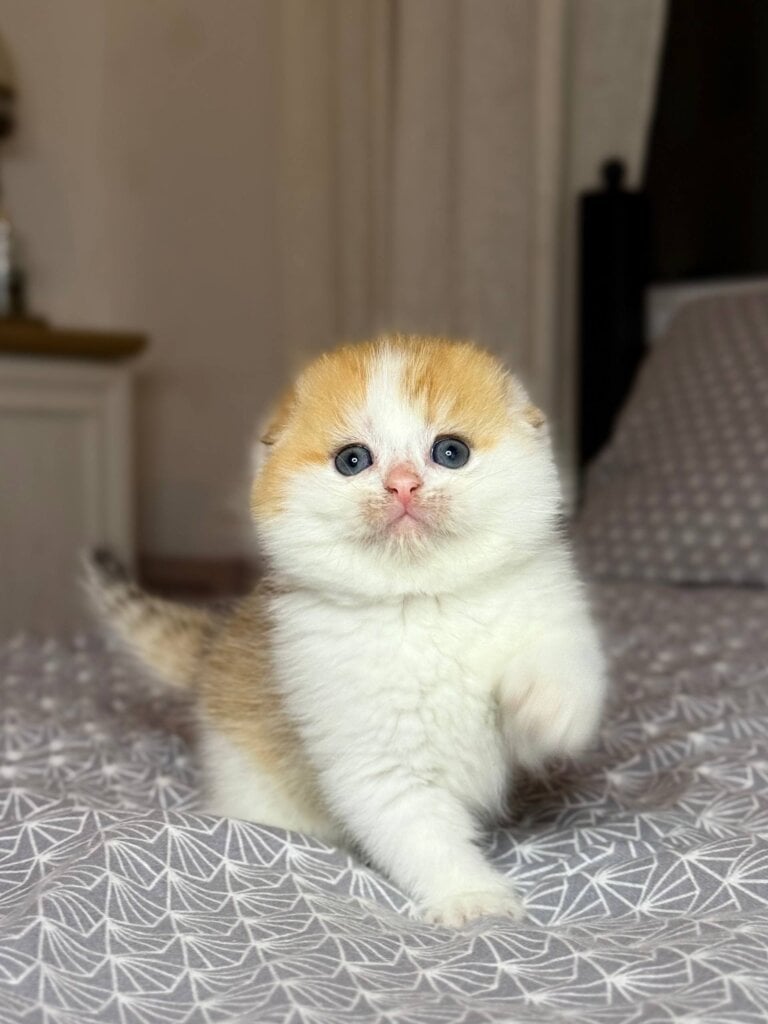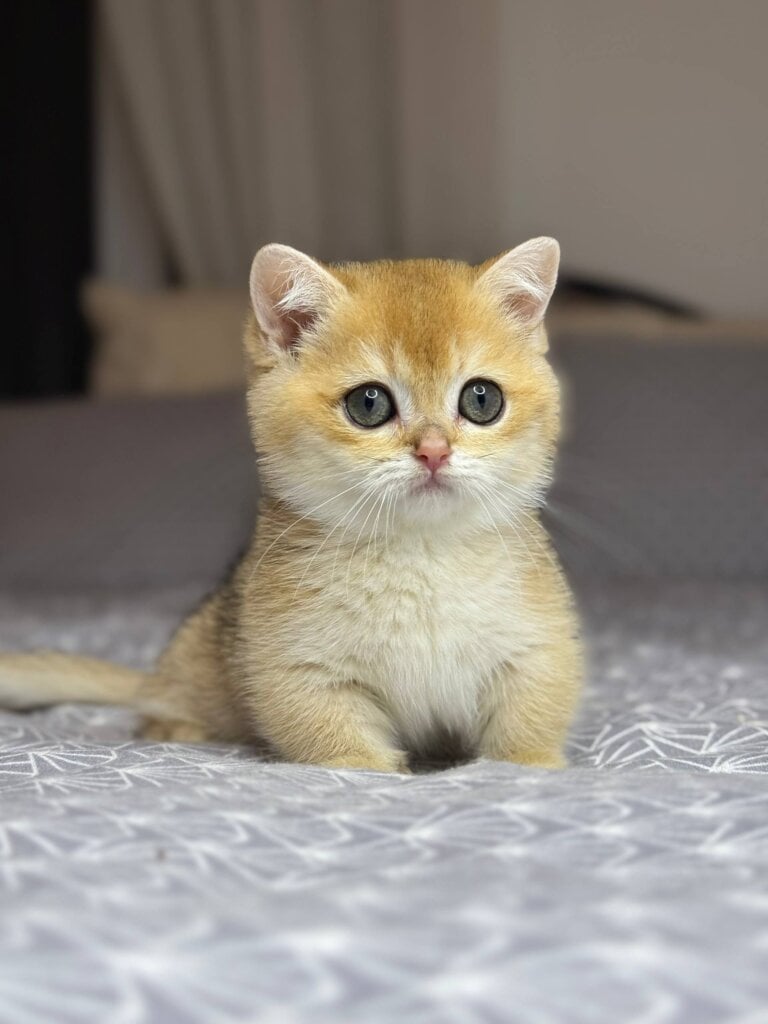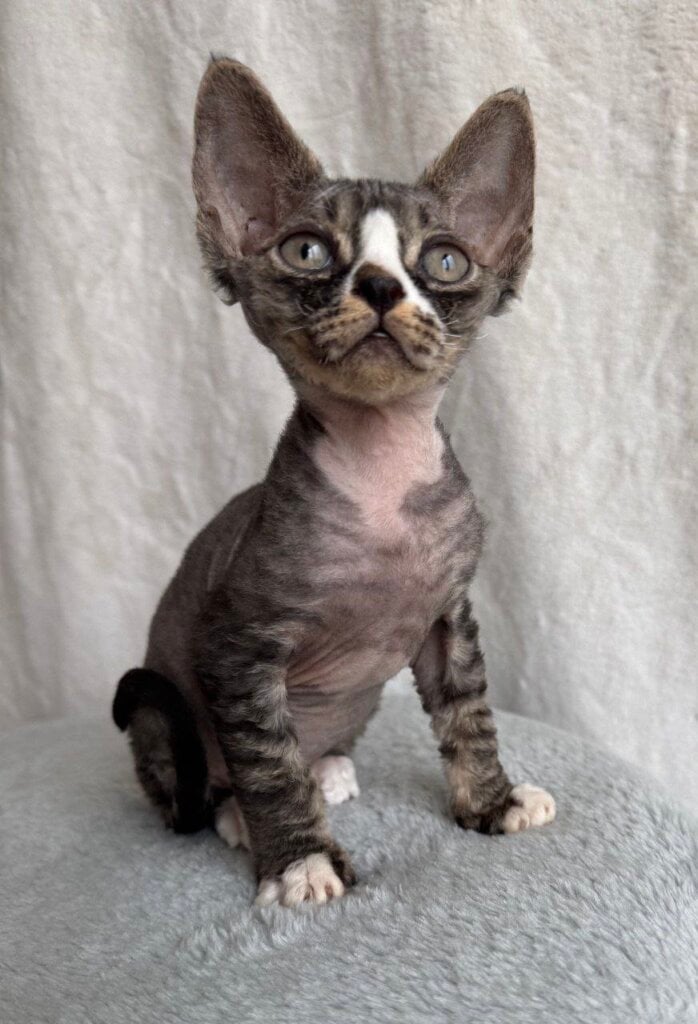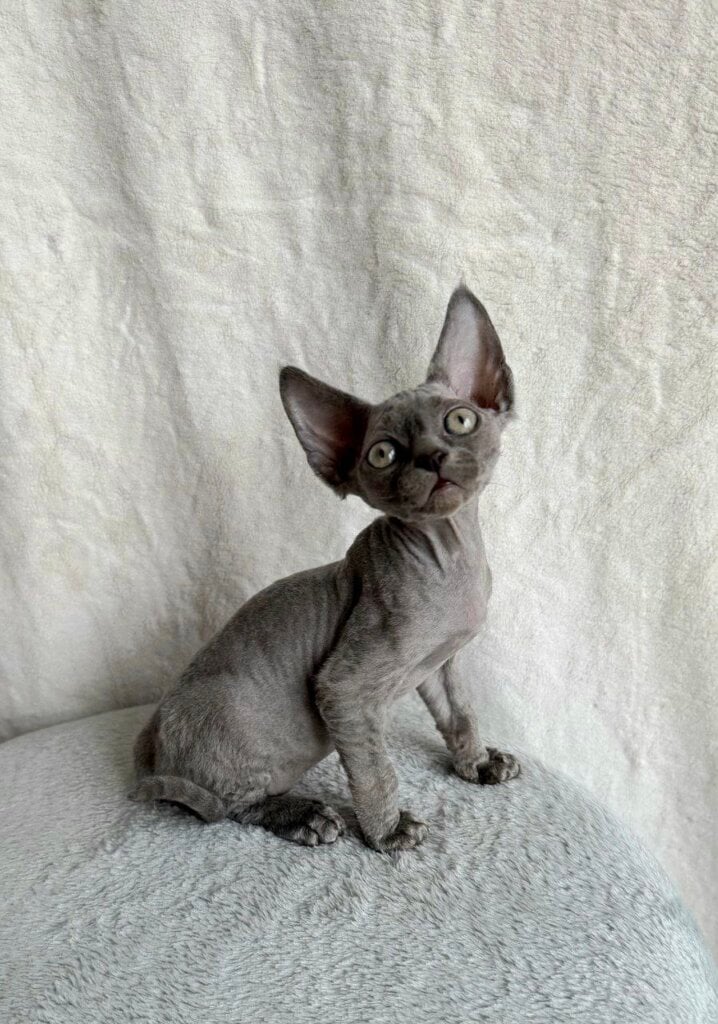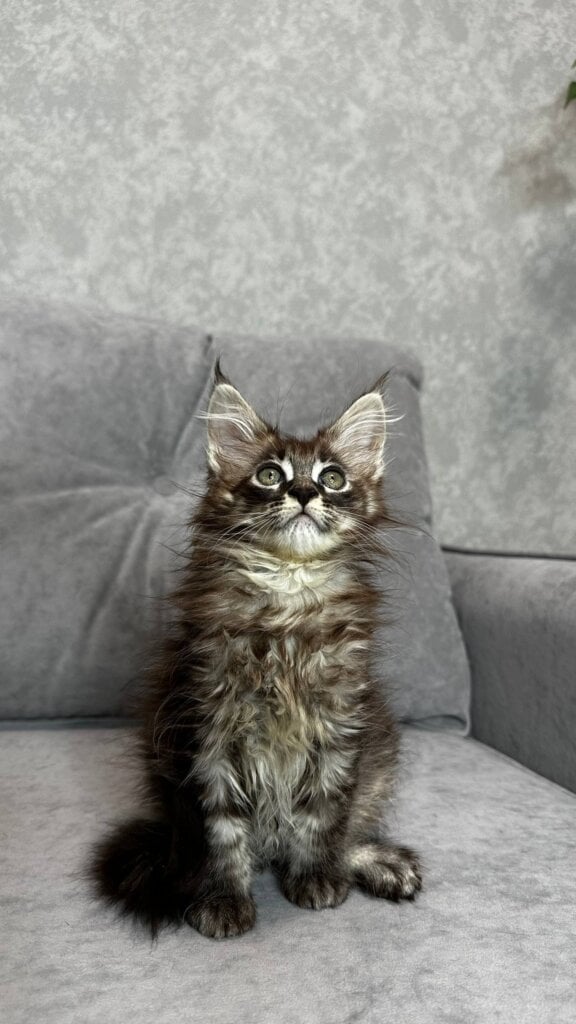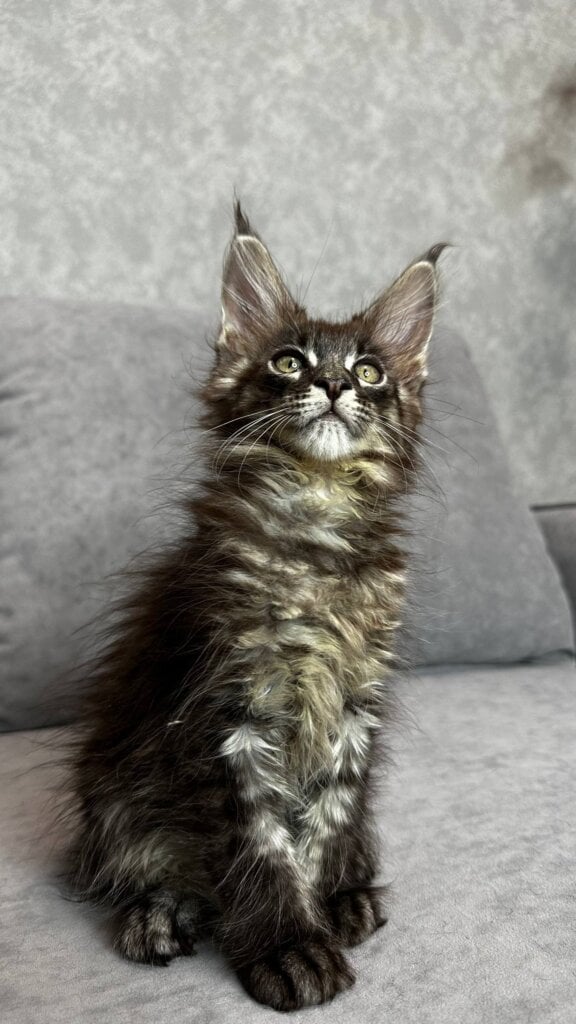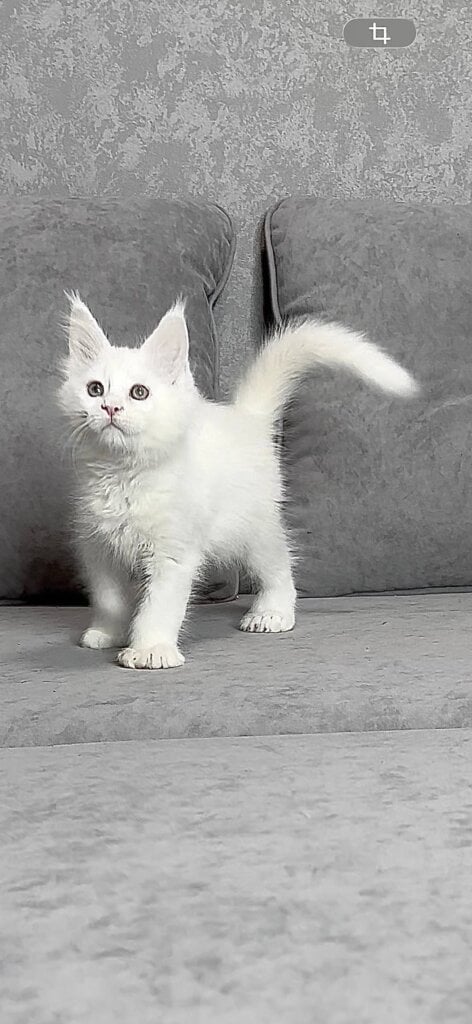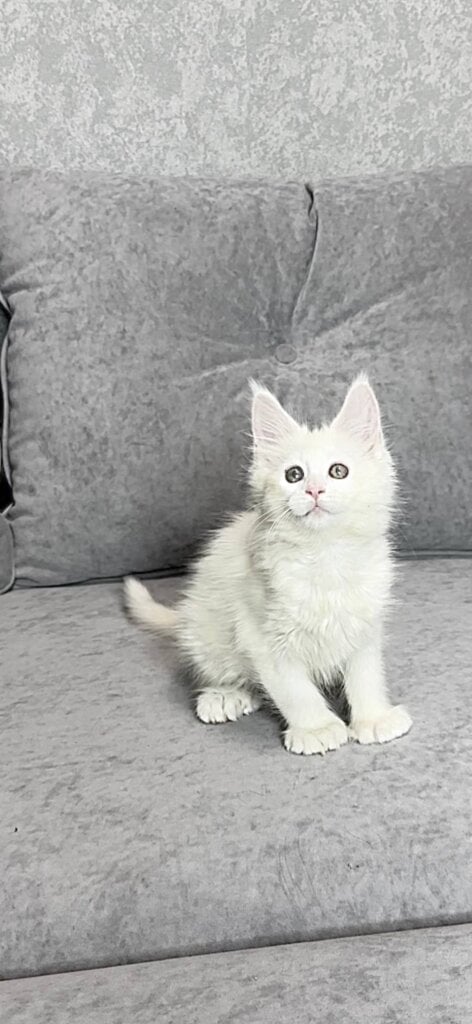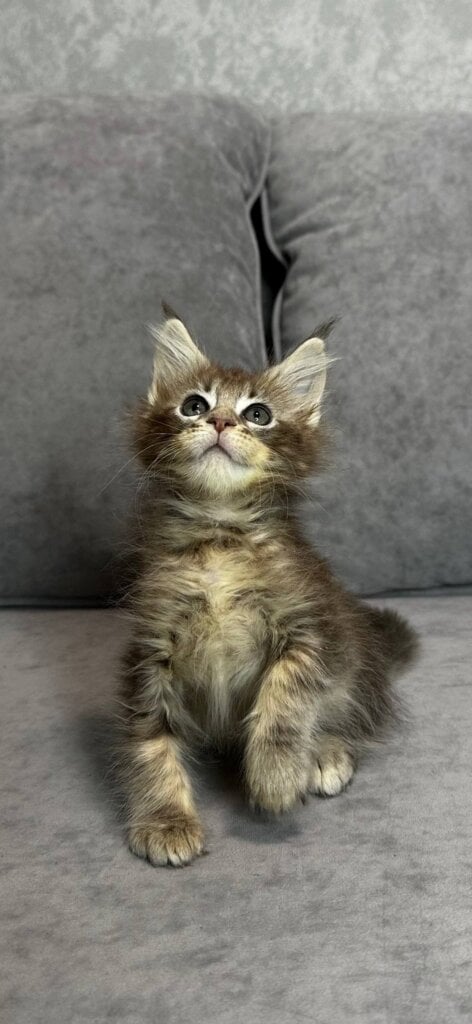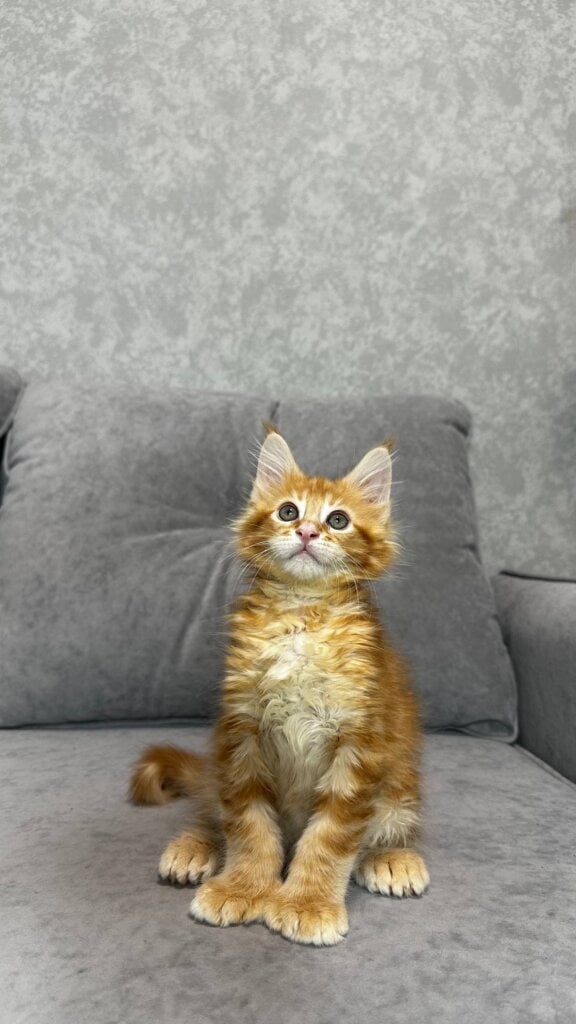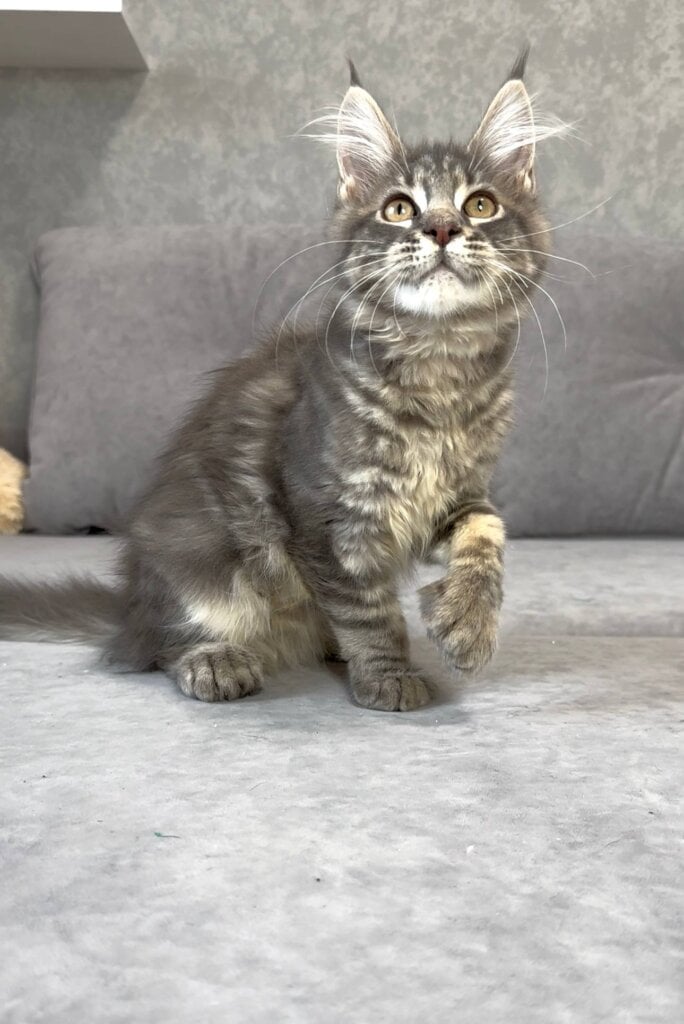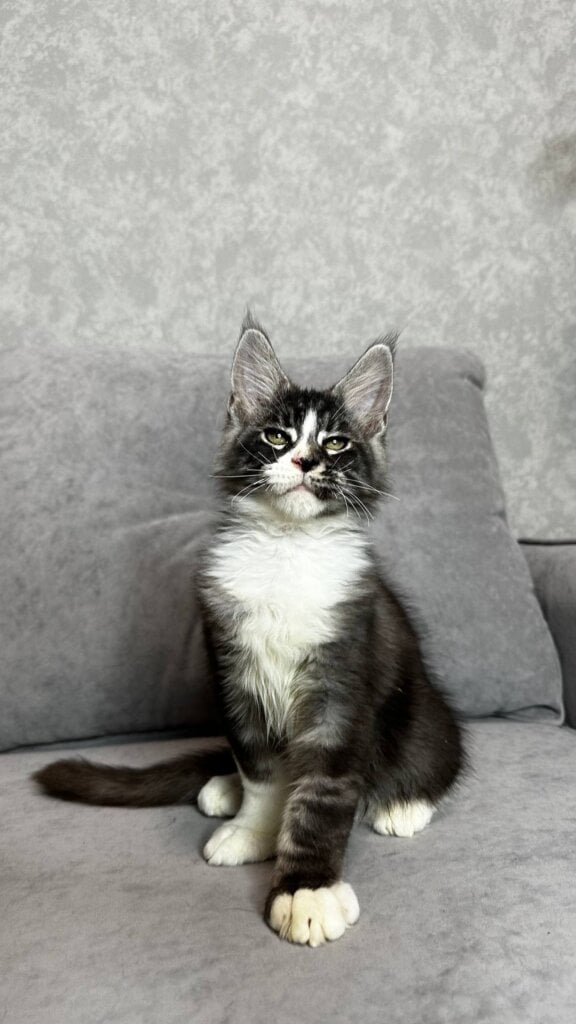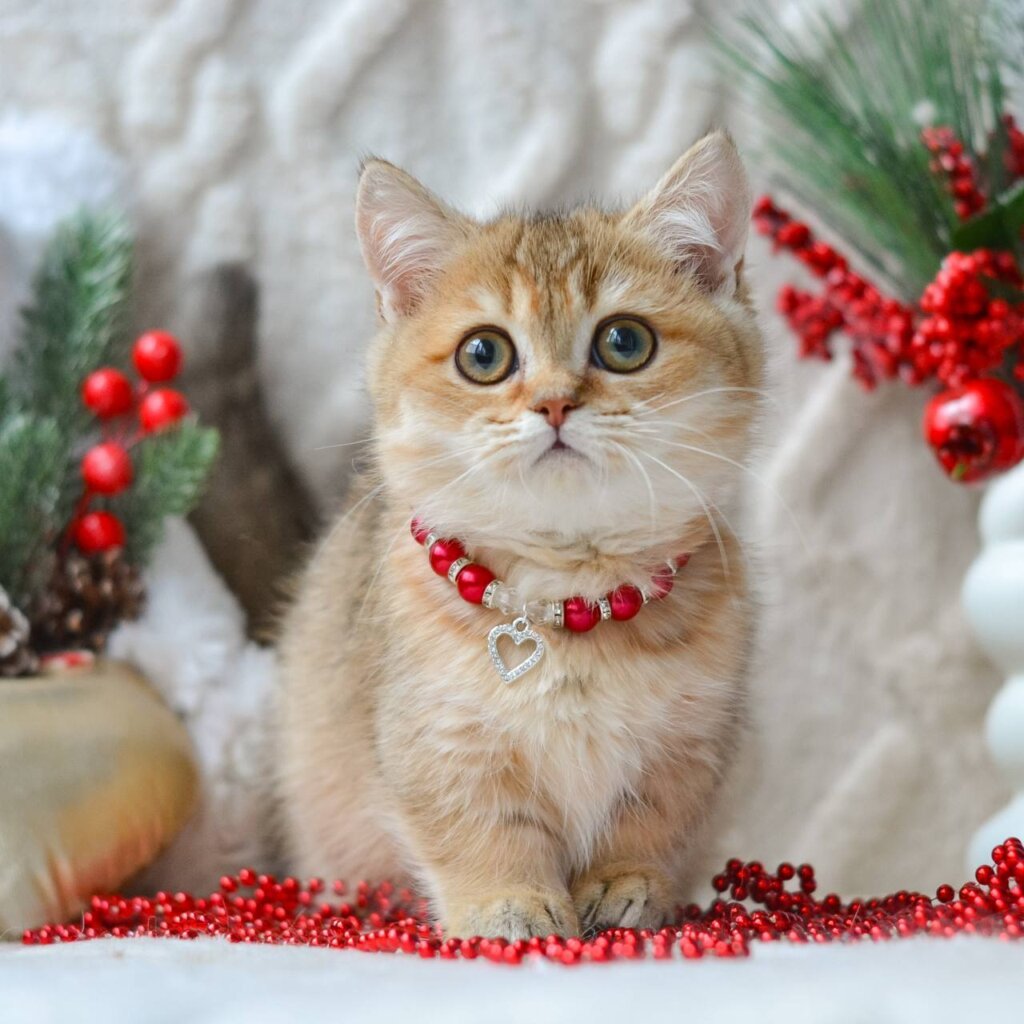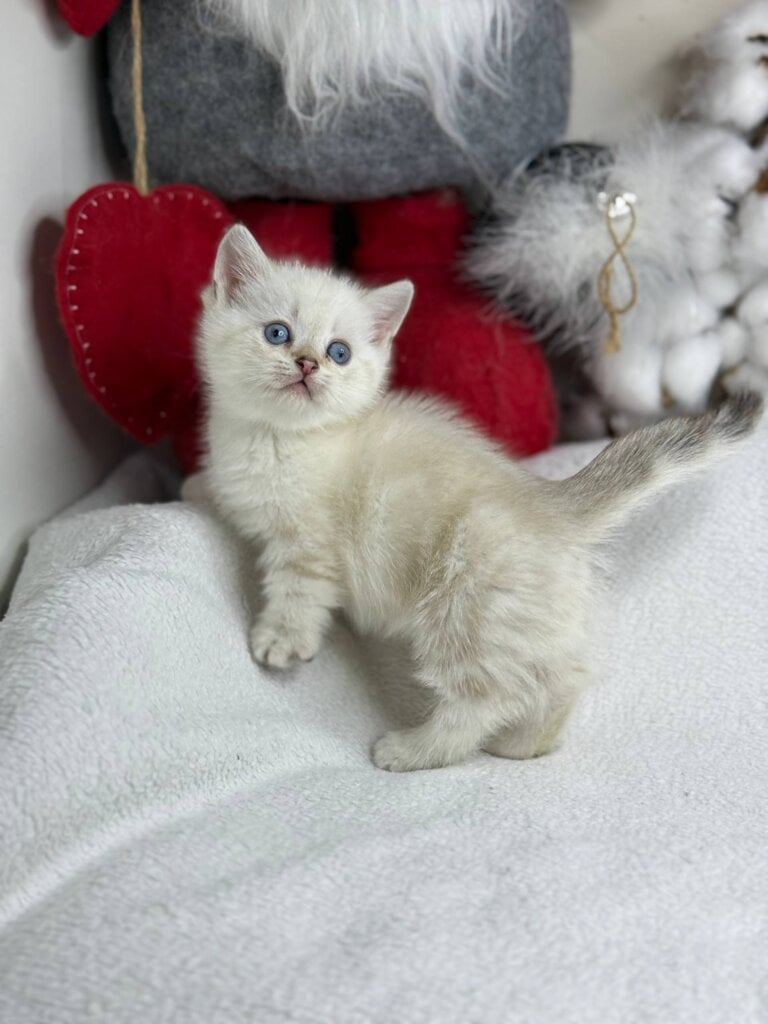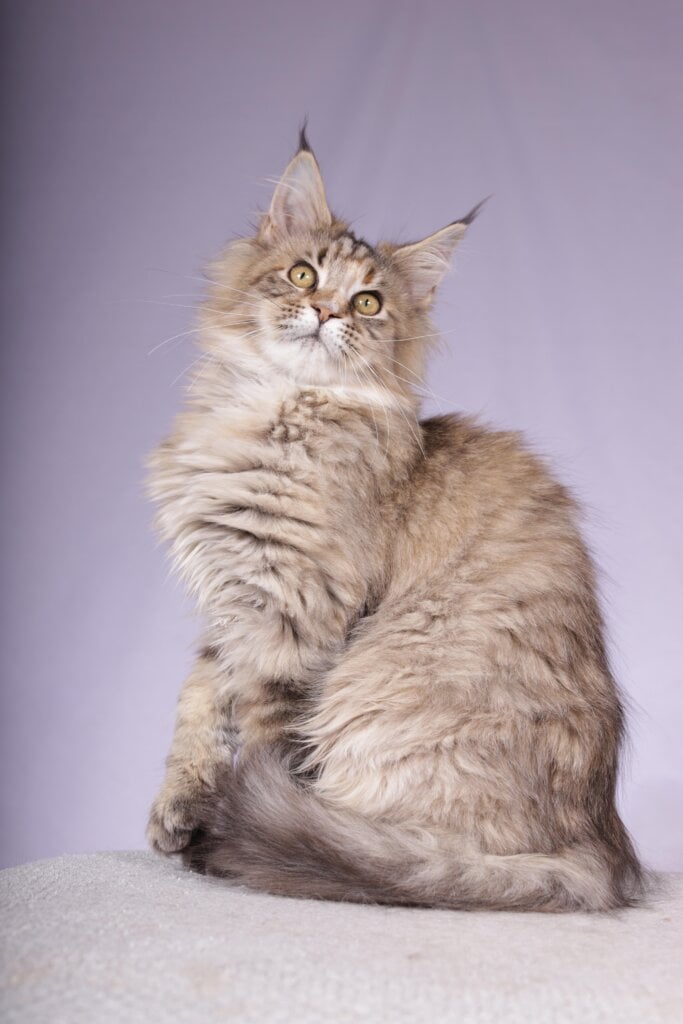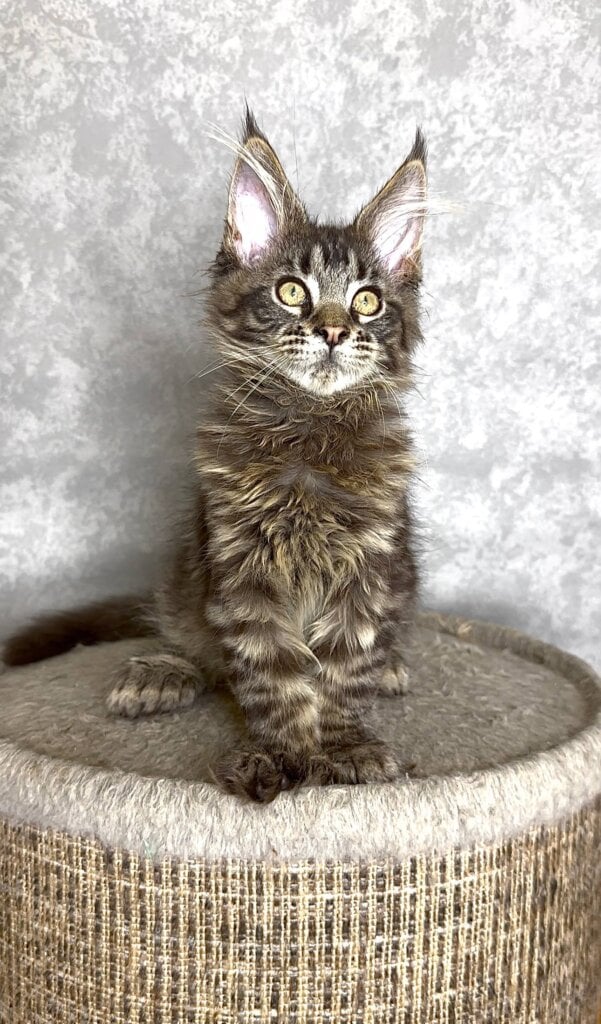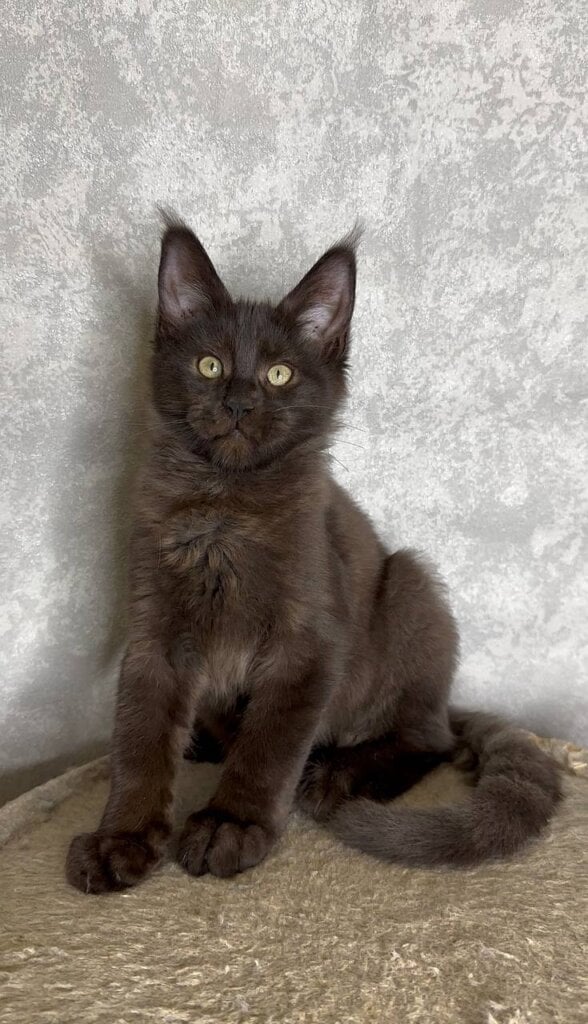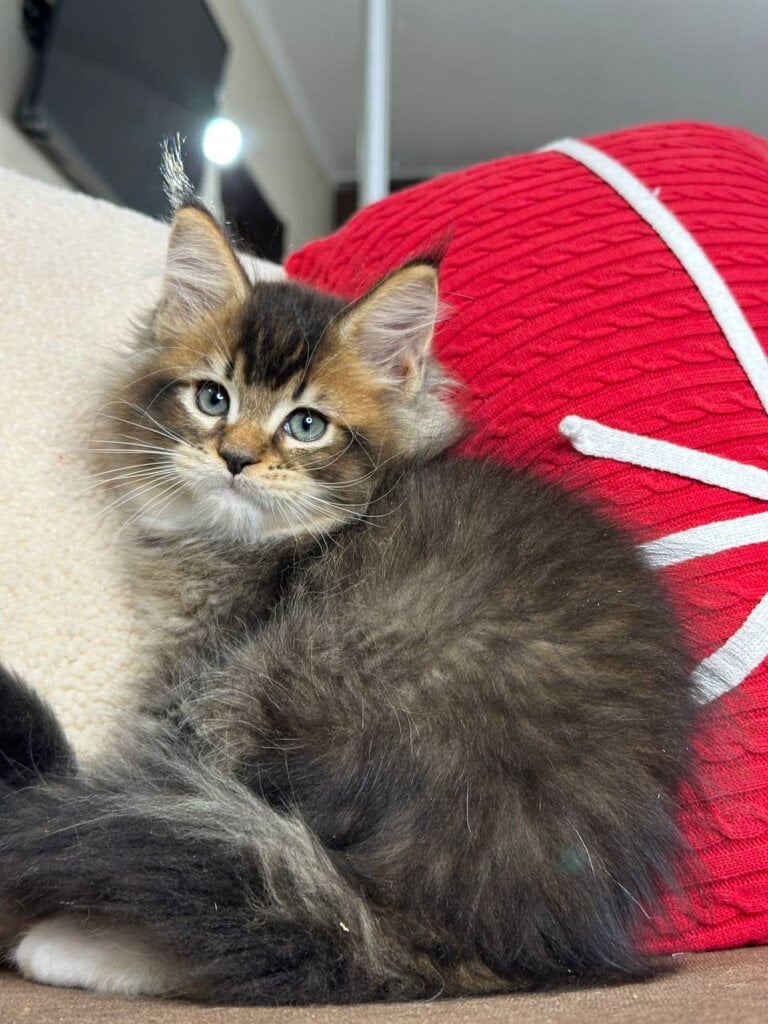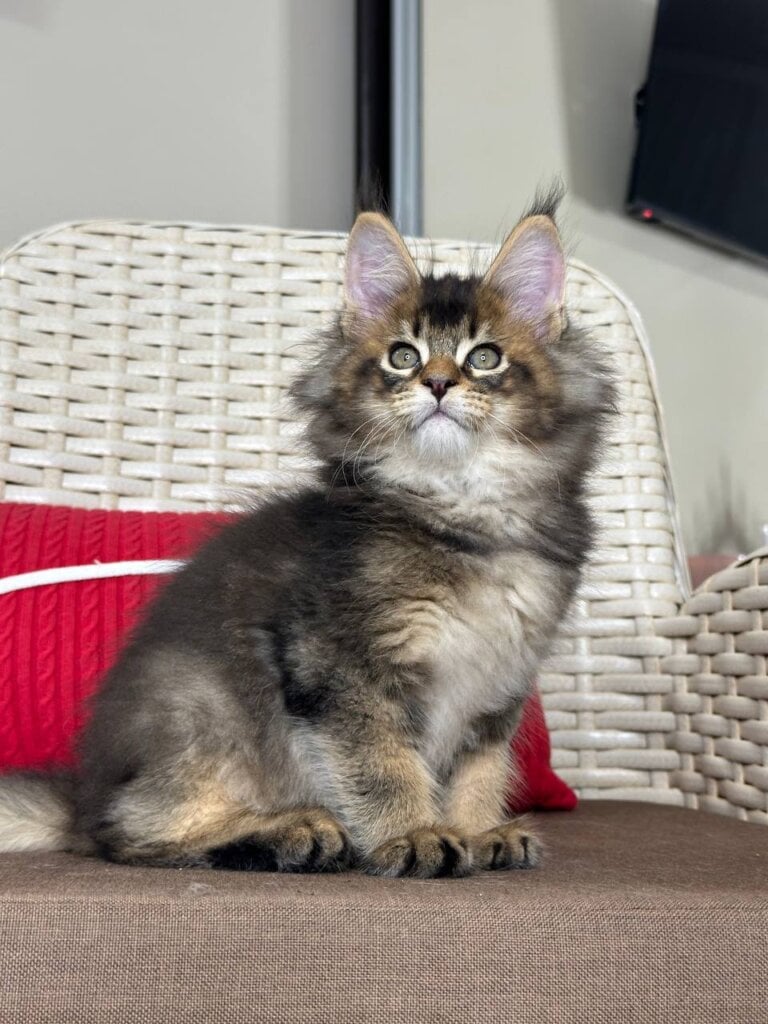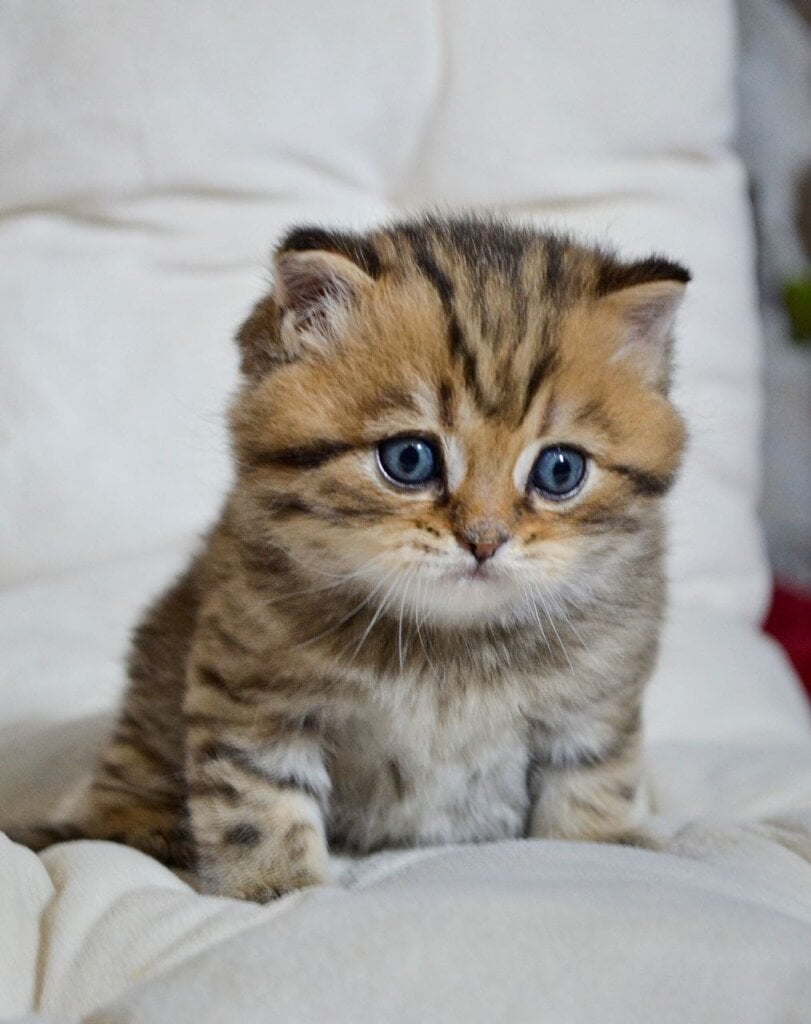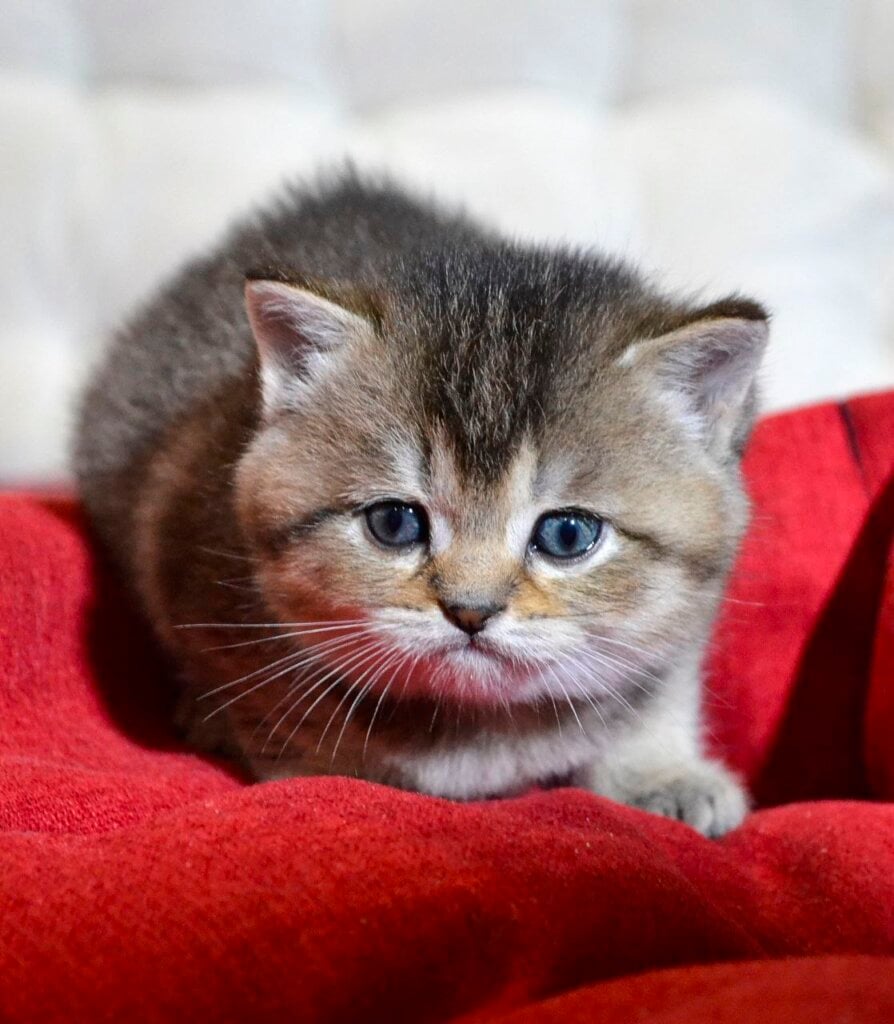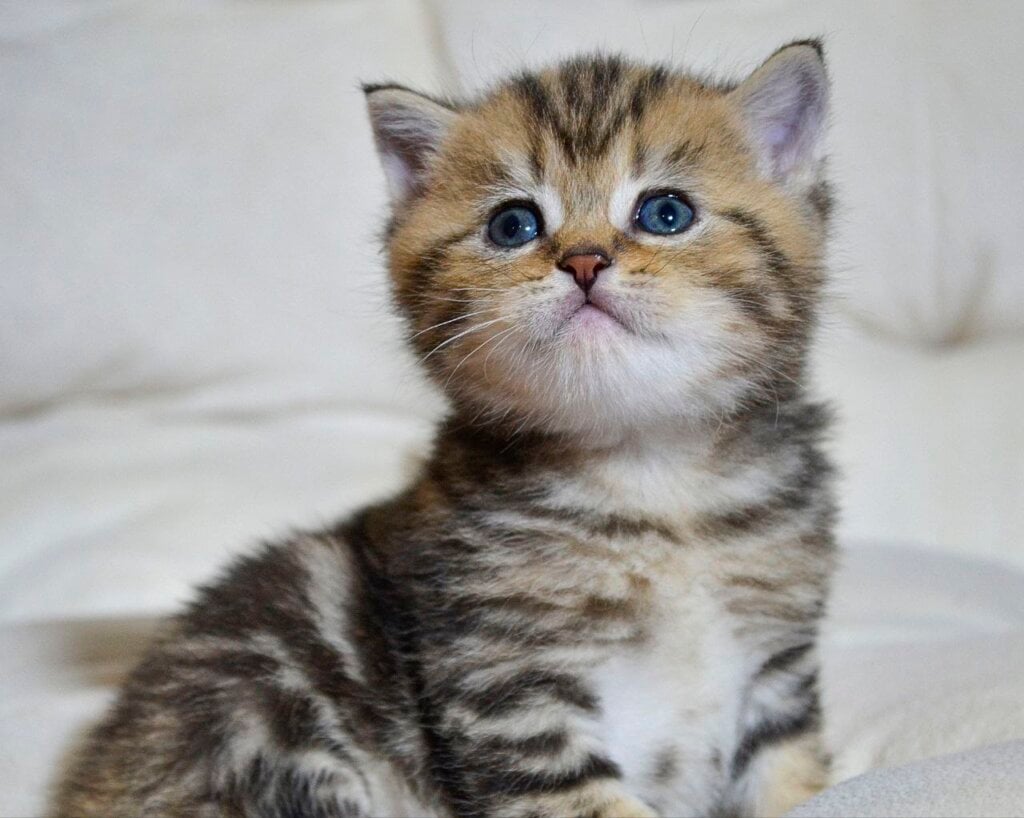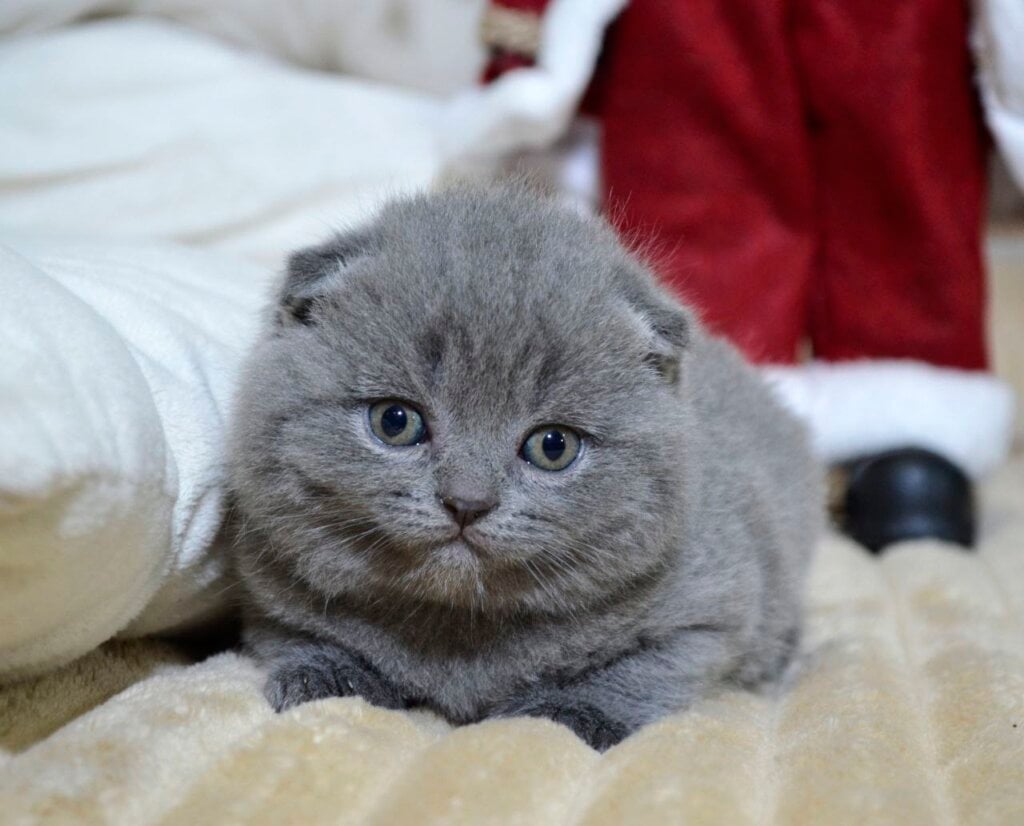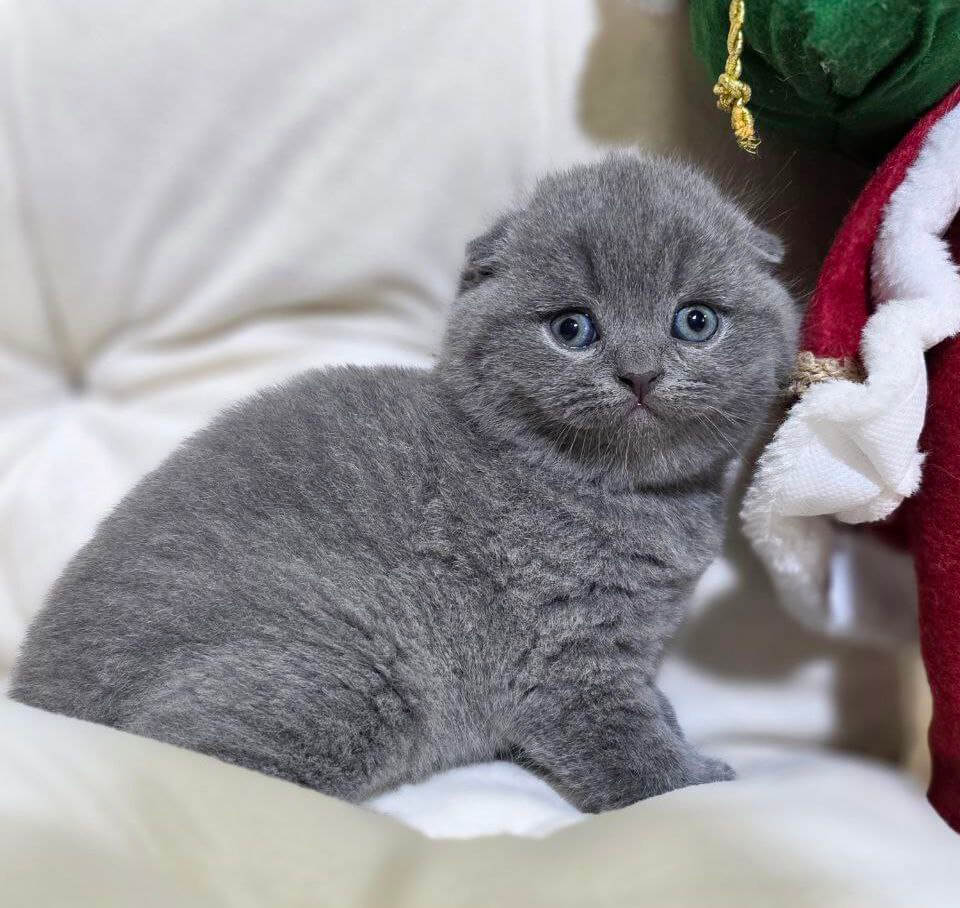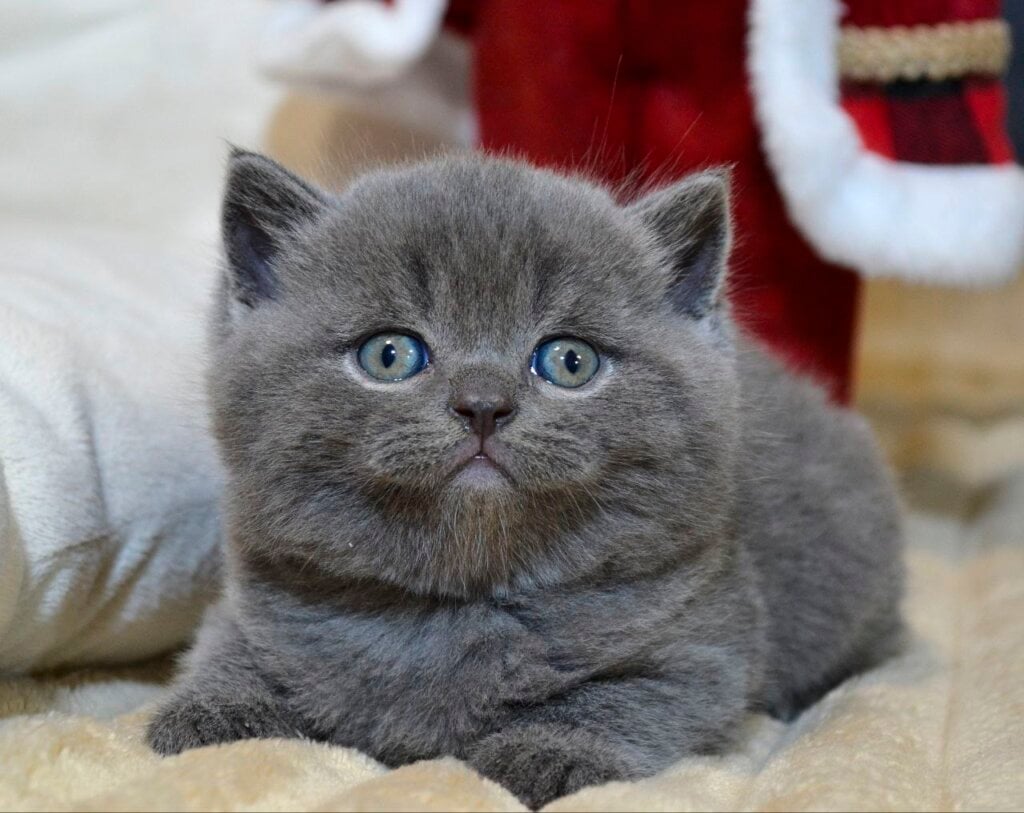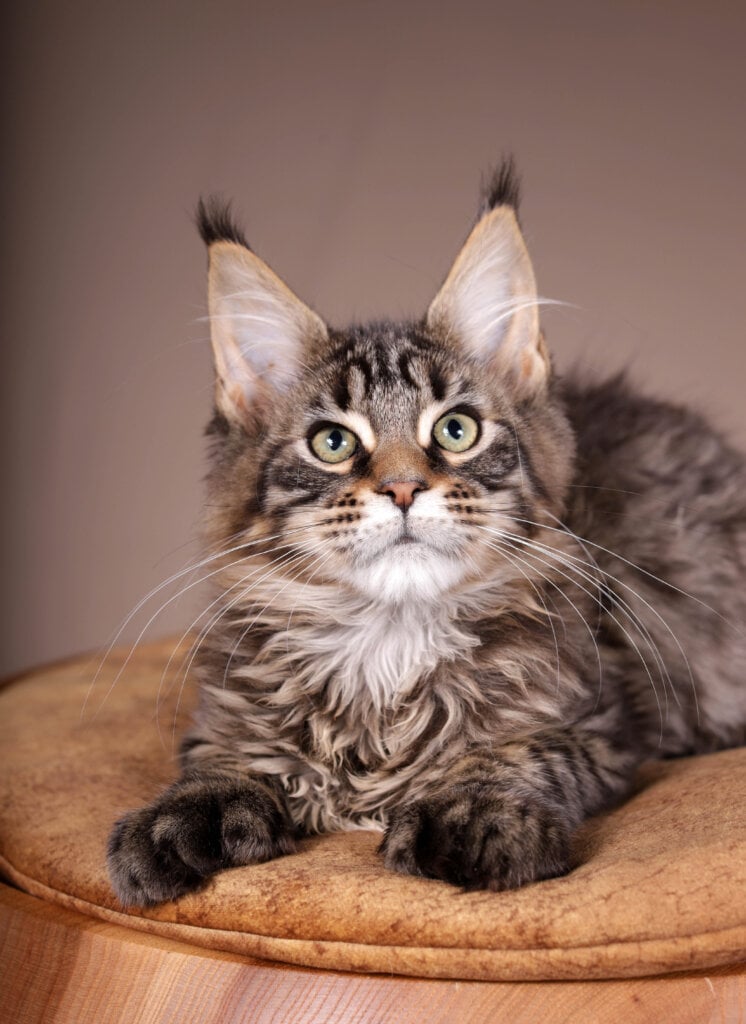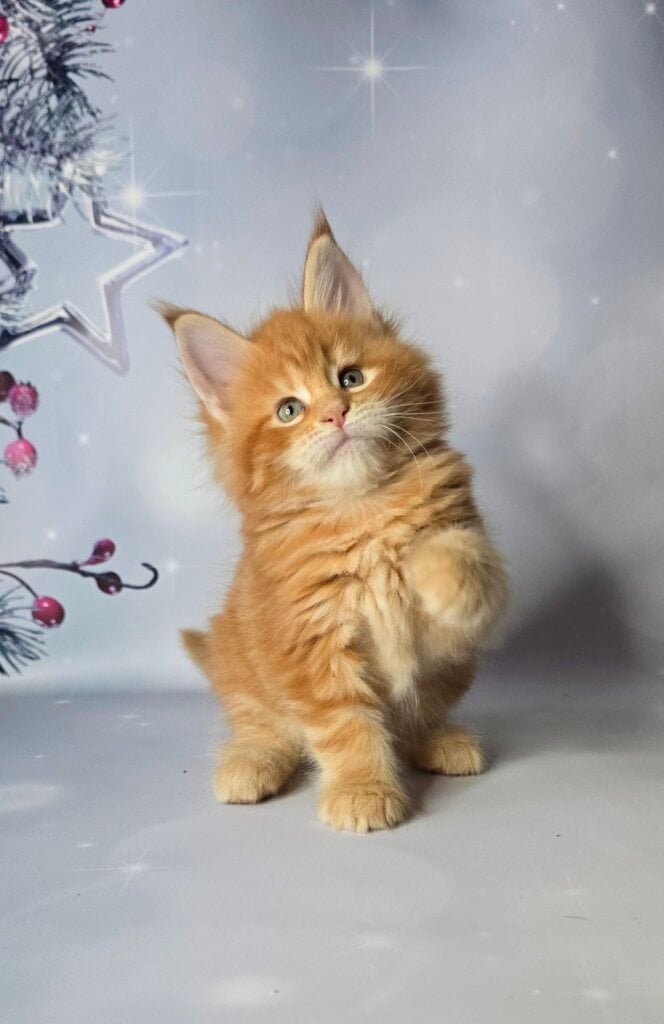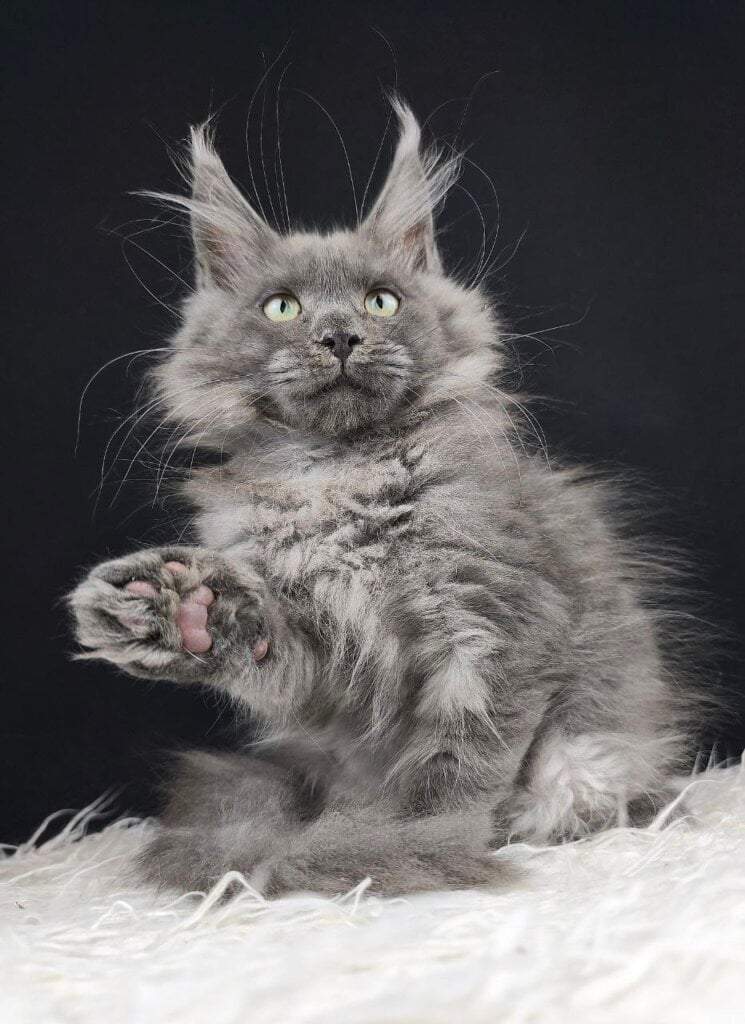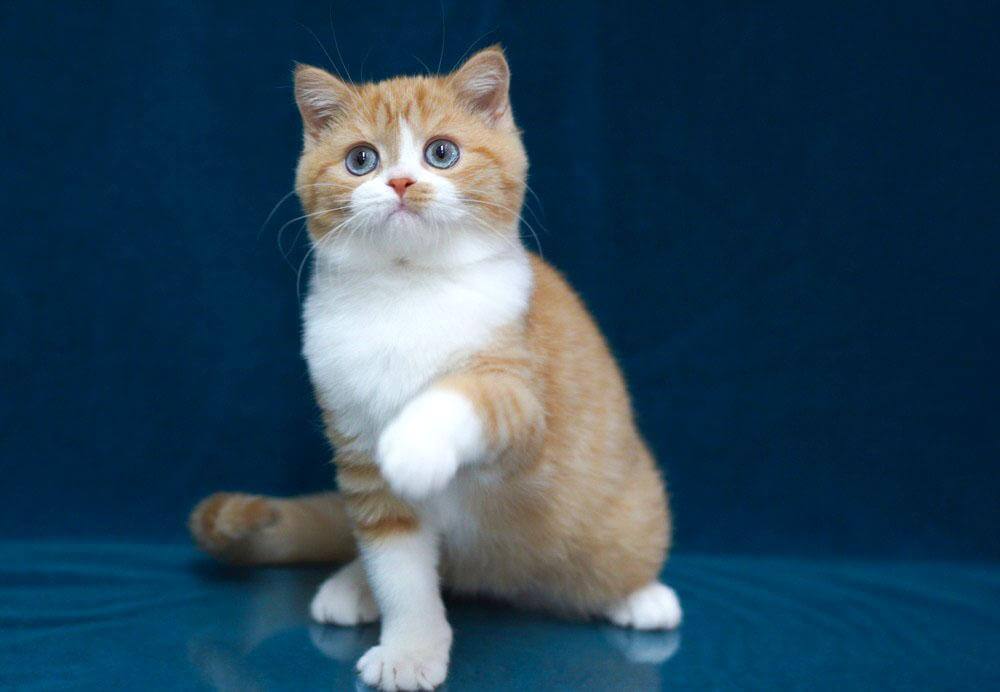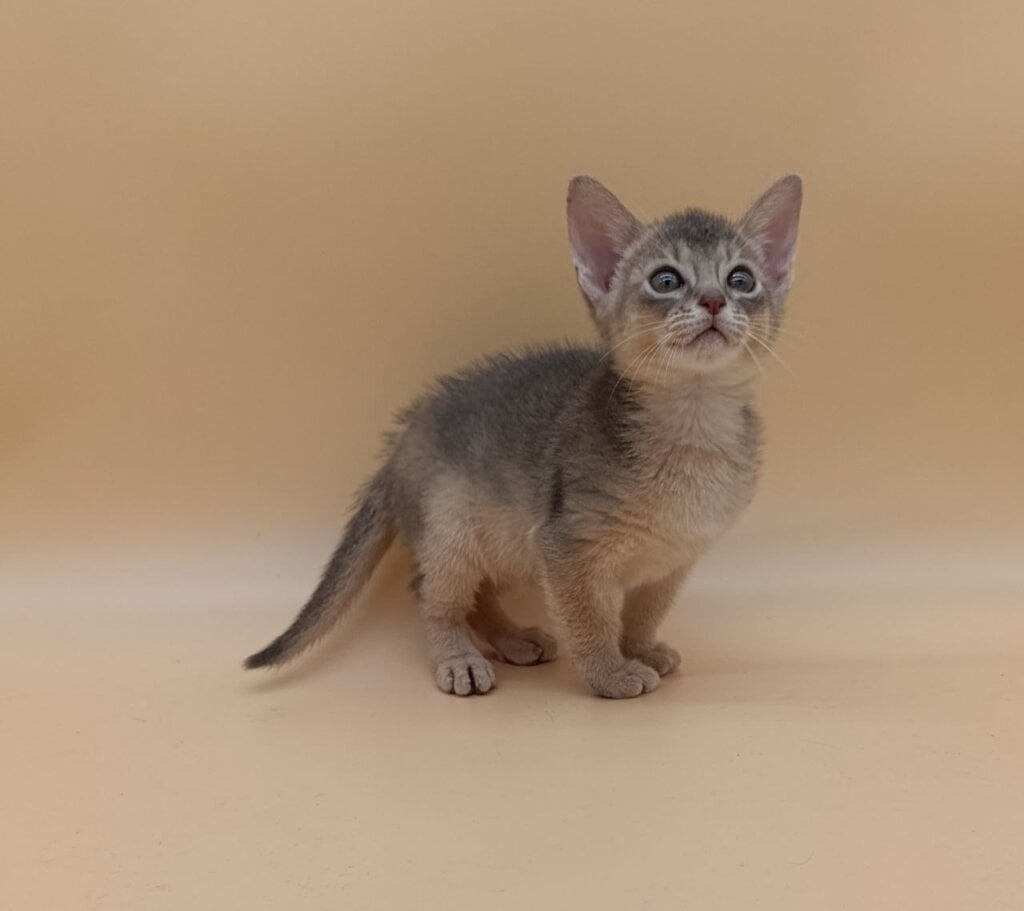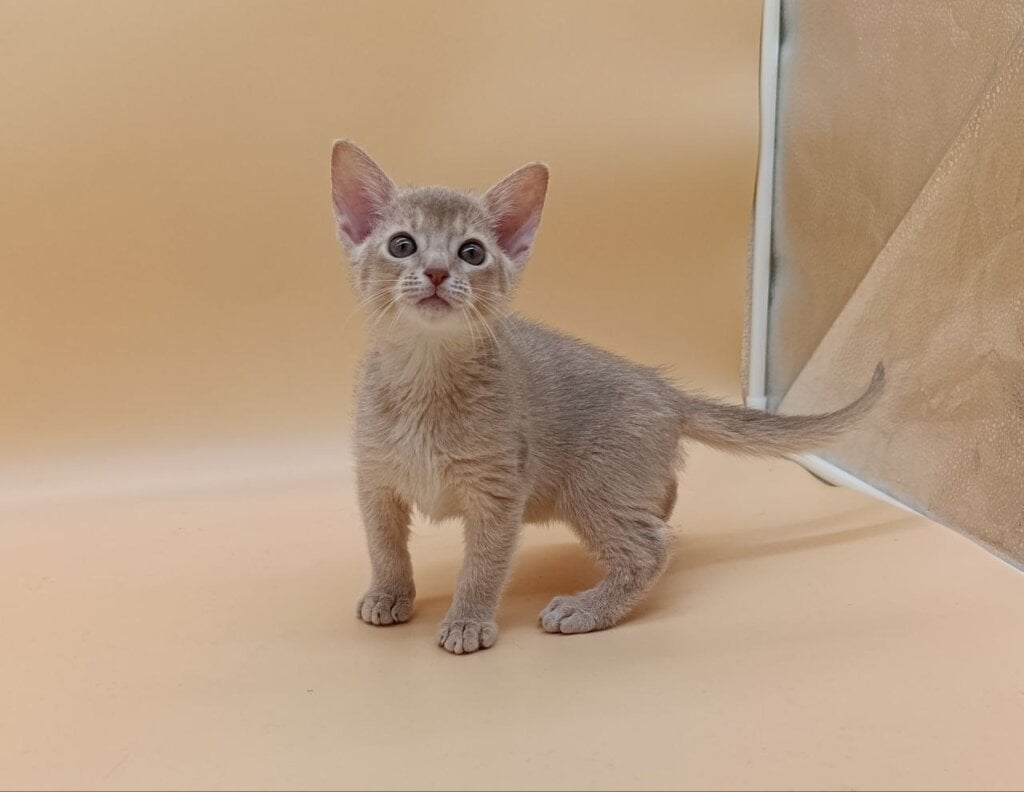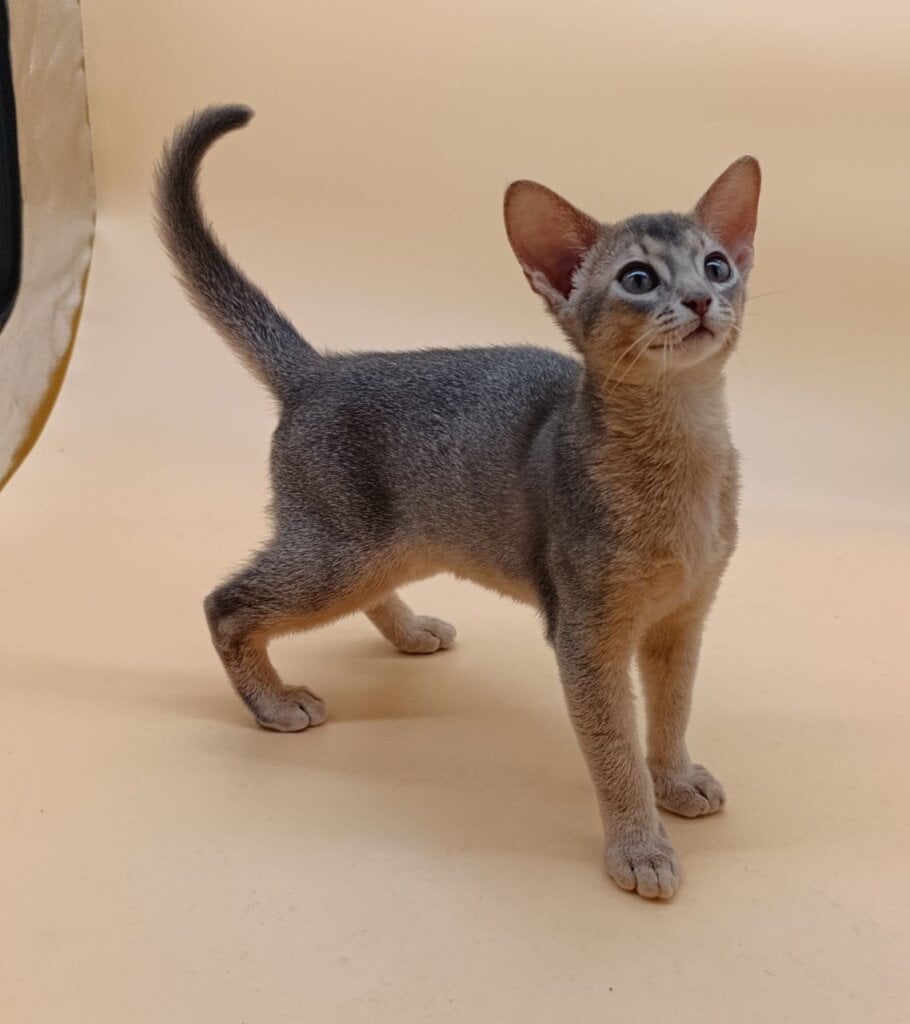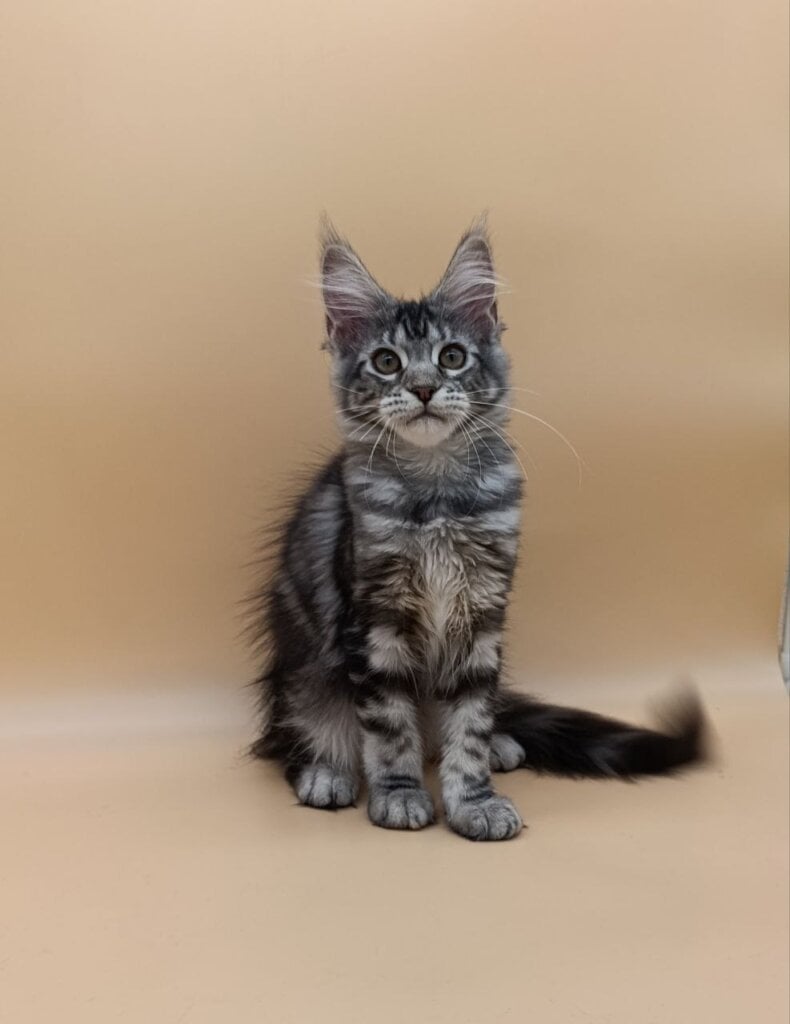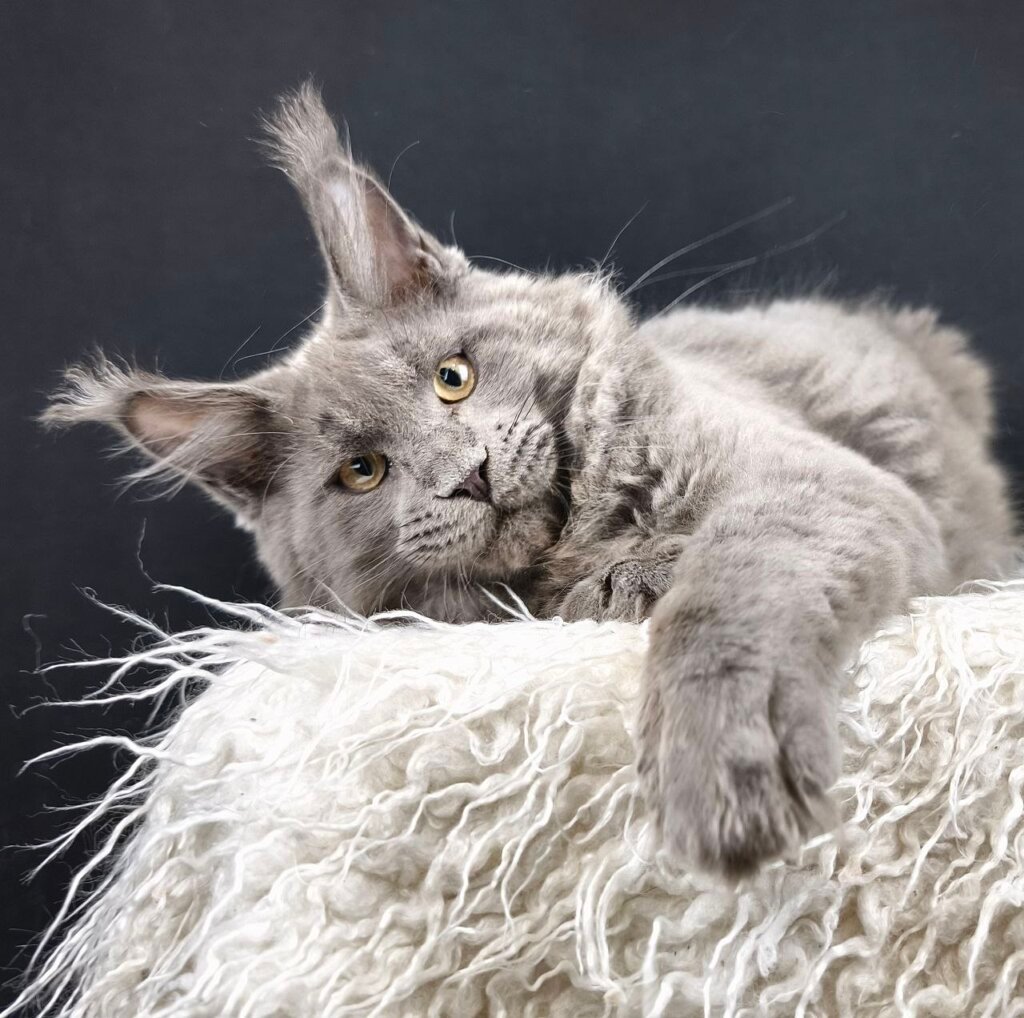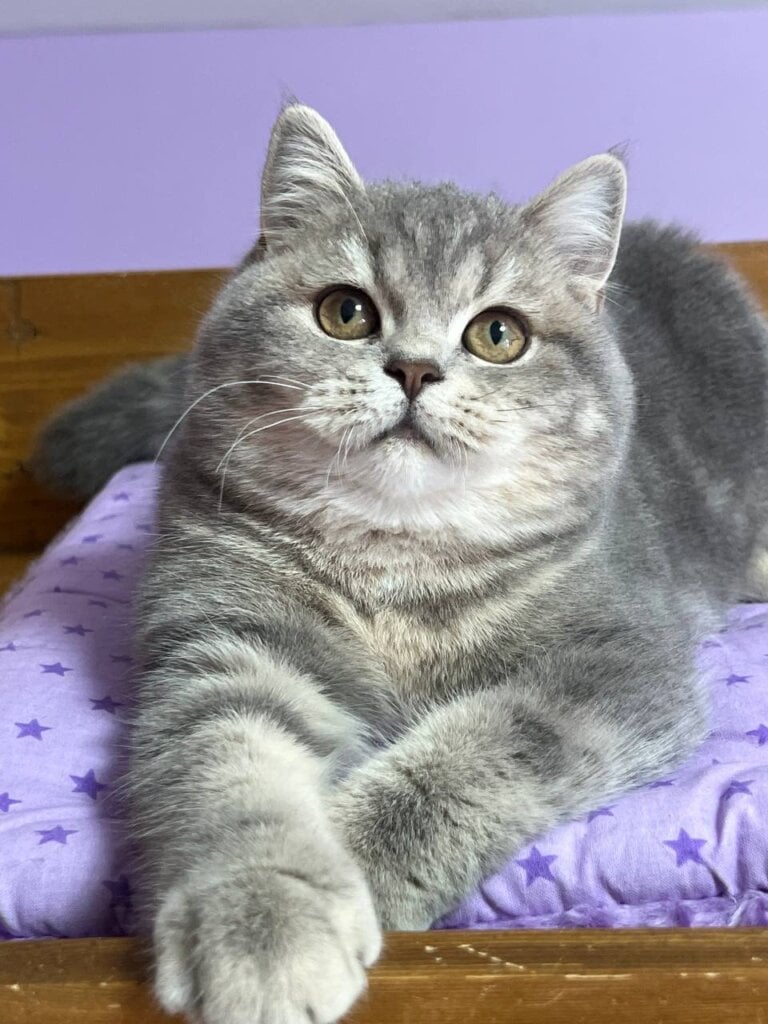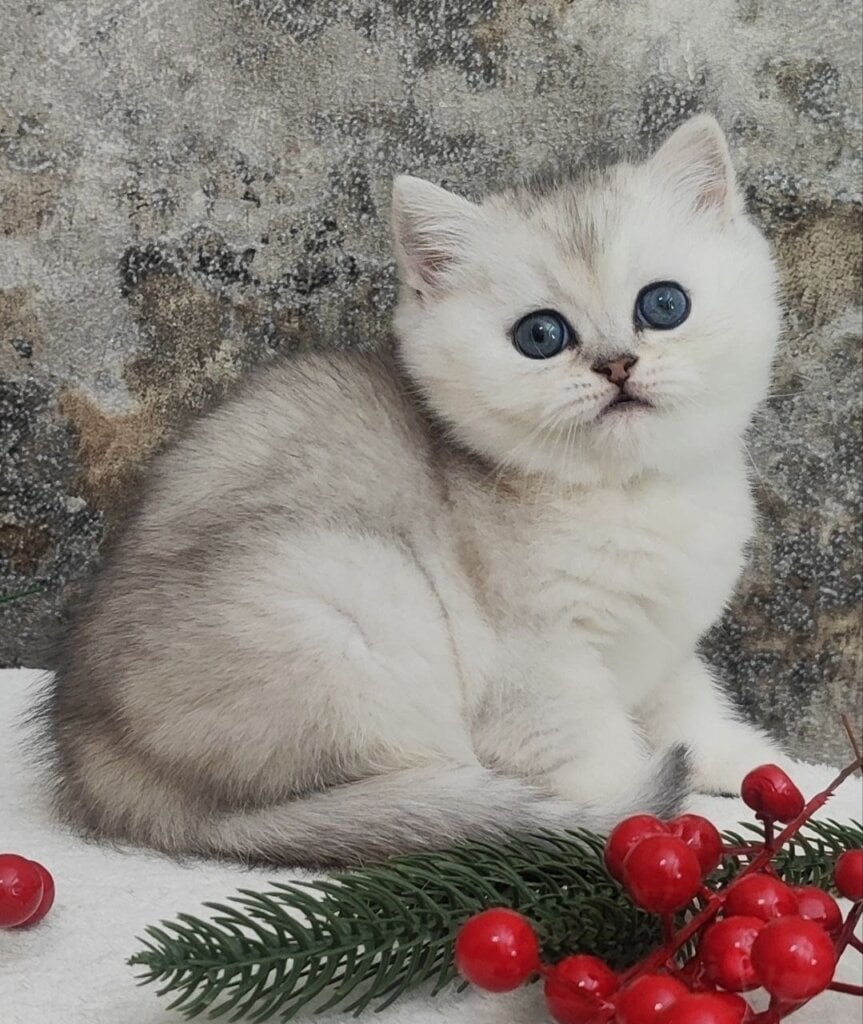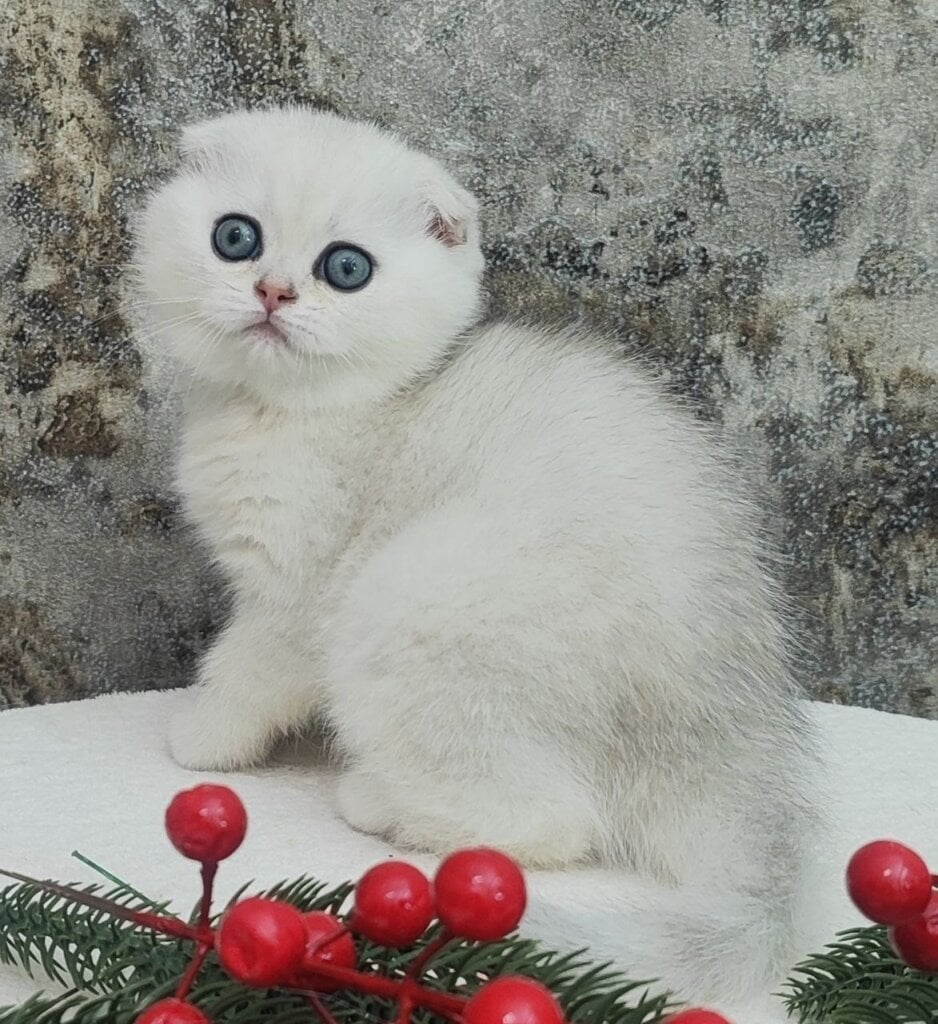Scottish Fold cats ears are folded due to a spontaneous genetic mutation that affects cartilage. This gene causes the ear tip to fold forward, giving the breed its distinctive appearance. The fold does not impact hearing, but it is a pivotal characteristic for the breed. A lot of folks just love the soft, rounded face and soft features of the Scottish Fold. Second, let’s discuss their history and care requirements.
The Genetic Anomaly
Scottish Fold cats owe their signature folded ears to a genetic anomaly called Scottish Fold Osteochondrodysplasia. It’s brought on by a mutation in the TRPV4 gene, impacting how the cat’s cartilage develops and functions throughout the body. All Foldies with folded ears possess this variant and all are impacted in some way. The mutation isn’t just molding the ear-its effect extends beyond, influencing bone and joint health.
- TRPV4 impacts cartilage in ears and joints.
- Bone deformities can start as early as 7 weeks old.
- Two-copy kittens endure agonizing pain and arthritis.
- Joint stiffness, lameness, and limited movement are common signs.
- No cure, yet pain relief can save lives.
- Severity ranges from mild to severe, depending on the copies of the gene.
- Responsible breeding and genetic testing are crucial for prevention.
1. The TRPV4 Gene
TRPV4 encodes a protein that regulates cartilage development. When this gene mutates, it makes cartilage grow too soft or brittle. That’s why Scottish Folds have their signature ear conformation. The identical gene defect can cause problems with joints and bones. That’s not to say all cats will exhibit the problems with equal severity or at the same age, but they’re all impacted.
TRPV4 genetic testing should be mandatory for breeders and buyers. It identifies cats prone to serious health issues and enables families to make an informed decision about their future feline companion. Testing can steer breeders away from dangerous pairings that result in more grave illness in kittens.
2. A Dominant Trait
The folded ear trait is dominant, so only one copy of the mutated gene is necessary for a kitten to display the characteristic. If a Scottish Fold parent carries the gene, 50% or more of the litter’s kittens will be impacted. It’s a trait that’s so common within the breed, that it’s made the breed so popular and why so many folds we see in Scottish Fold cats today.
This prevailing gene enhances the popularity of the breed but carries health dangers. More awareness because families need to know what’s coming and how to care for their pets.
3. Cartilage Defect
The gene mutation alters cartilage formation throughout the body. Not just ears, but joints and spine, as well. This leads to pain, swelling, and difficulty moving. Some cats develop mild symptoms, others have difficulty walking or jumping, particularly as they age.
These cartilage problems can cause osteochondrodysplasia-a condition characterized by misshapen bones and joint pain. Vets can catch these issues on x-rays, even in young kittens. Being vigilant for symptoms catches problems in their early stages and minimizes the cat’s suffering.
4. Homozygous Impact
Cats with two mutated TRPV4 genes (homozygous) receive the most severe. They frequently exhibited bent legs, rigid tails and difficulty in locomotion. Several develop crippling arthritis in young life.
It’s not safe to breed two Scottish Folds. It creates additional homozygous kittens who hurt more. Fine breeders don’t permit this coupling.
Responsible breeding helps cut these risks.
5. Heterozygous Expression
A heterozygous Scottish Fold displays folded ears but usually exhibits less severe symptoms. They may develop arthritis or joint pain as adults but the majority live a reasonable quality of life with proper care.
Heterozygous cats are what you want to breed. They reduce the risk of severe illness in kittens. Genetic variety, of course, is king – keeps the breed robust and healthy.
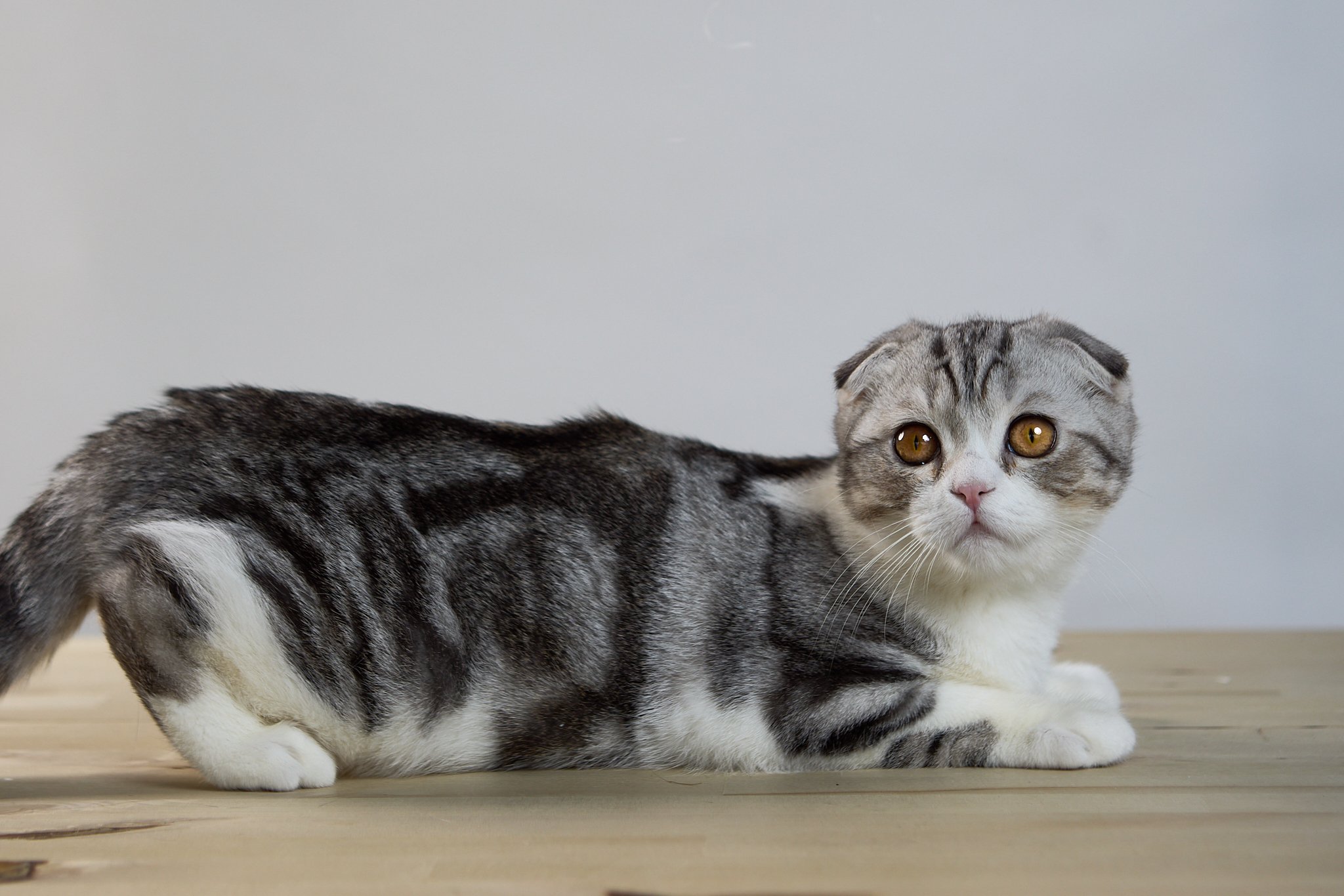
A Painful Reality
Scottish Fold cats are easy to notice because of their adorable, folded ears. Under this appearance lurks a harsh reality. The gene that folds their ears gives them a disorder known as osteochondrodysplasia (OCD). This disorder results in deformed cartilage and bone growth, which damages the cat’s joints and can result in chronic issues. Although many cat lovers remain fixated on aesthetics, it can equate to a reduced quality of life for the cats themselves. Tragically, so does every Scottish Fold with folded ears, and Australian investigations in the ’90s demonstrated all will – ranging from mild to extreme.
Clinical Signs
Look out for stiff legs, difficulty jumping, or short steps in Scottish Folds. These are the warning signs of OCD. Other cats have a wobbly walk or refuse to move.
If you experience pain in your legs, tail or back, that usually indicates the bones and joints are involved. Cats eventually just give up playing or grooming themselves. They may act cranky or withdraw more. If you notice these changes, it’s an indicator your cat might be in pain.
Early recognition of these signs assists. A good vet visit when you need it can put the brakes on the pain and make life more manageable. Routine visits are essential. A compassionate owner never overlooks a limp or defers a check-up, regardless of how minor the change appears.
Diagnostic Process
Diagnosis begins with a complete physical exam. A vet examines the dog for thickened joints and pain. Next, X-rays or other imaging assist to see how the bones have adapted.
Imaging reveals soft tissue swelling, bone nodules, and spinal or leg deformities. This aids the vet in observing the spread of the disease. Occasionally, blood work is required to exclude additional issues.
It’s critical that owners obtain a definitive diagnosis quickly. Only a vet can determine if the joint pain is due to OCD or has another origin. If you notice your foldie hobbling or behaving strangely, seek professional assistance immediately.
Pain Management
- Work with your vet to build a care plan
- Use safe pain medicine prescribed by the vet
- Try gentle physical therapy for stiff joints
- Change home setups-ramps or soft bedding help a lot
- Watch your cat’s weight to ease joint stress
- Check for pain frequently and take notes for the vet
Every scottish fold cat deserves a plan of their own. Medicine, therapy and home changes are best together. Owners need to remain vigilant for new pain or alterations in how their cat walks or lays.
Awareness Matters
Scottish Folds require additional daily attention. Their wellness is beyond appearances.
Every owner should know the risks.
A healthy, happy cat is worth more than bent-back ears.
The Ethical Dilemma
Scottish Folds are known for their cute folded ears, but these adorable appearances carry legitimate ethical concerns. The ears flop down due to a gene mutation that impacts other areas of the body, not just the ears. This leads to pain, joint issues, and a diminished quality of life. Every time a breeder selects kittens based on appearance, there’s the potential of transmitting health problems. The argument is about the ethics of prioritizing aesthetics over a cat’s comfort and health.
Breeding Controversy
Breeders and cat lovers alike debate the dangers of breeding Scottish Folds for their iconic folded ears. The problem is the Fd gene that produces osteochondrodysplasia – a cartilage and bone disorder. If both parent cats are Scottish Folds, their kittens can receive two copies of the gene and experience significant bone and joint issues. It’s the classic looks-versus-welfare argument. While some breeders argue that these distinctive appearances help more cats get adopted, many veterinarians caution that the health consequences are severe. Veterinary professionals have frequently mentioned that these felines can experience chronic pain, arthritis, and mobility limitations. Ethical breeders emphasize health and comfort first, not simply how the cat looks.
Outcrossing Practice
Crossing Scottish Folds with other breeds, such as British Shorthairs, is one way in which breeders may minimize the disease risk. Outcrossing significantly increases the likelihood that your kittens will live a pain-free life by minimizing the possibility of receiving two Fd genes. For instance, crossing a Scottish Fold with a straight-eared British Shorthair produced kittens with healthier, more robust joints. Others, like some breeders, contend that outcrossing is a requirement for the breed’s survival. This habit doesn’t just benefit individual cats – it can enhance the entire breed’s health history, long term.
Banning the Breed
Scottish Fold breeding is banned in certain jurisdictions on welfare grounds. These bans are designed to shield cats from a lifetime of suffering. Animal welfare groups advocate these bans having witnessed too many Scottish Folds endure. If bans become widespread, breeders and owners may be confronted with an ethical dilemma-either modify their breeding practices or cease breeding Folds altogether. It’s gotten more discussion about breed standards, ‘health rules’ and what’s best for cats in general.
| Health Issue | Cause | Impact on Cat |
|---|---|---|
| Osteochondrodysplasia | Fd gene mutation | Joint pain, mobility loss |
| Arthritis | Cartilage defects | Chronic pain |
| Stiff tail/legs | Abnormal bone growth | Limited movement |
| Early-onset joint disease | Inherited cartilage disorder | Lifelong discomfort |
A Fold’s Origin
Scottish Fold cats are famous for their ears that fold down-their lineage can be traced back to just one barn cat in Scotland in the 1960s. The breed’s origin story is rooted in a natural gene mutation, distinguishing it within the realm of feline genetics and breeding history.
Susie the Barn Cat
Susie, a white barn cat from Perthshire, Scotland, was the original fold-ear-inheriting feline cat. She distinguished herself from local cats not only by her docile disposition, but by her forward-folded ears, which provided her a unique, unforgettable appearance.
Susie’s DNA harbored a dominant gene mutation associated with osteochondrodysplasia. When Susie had kittens, two of them got her special ears. William and Mary Ross, local farmers and cat lovers, took in one of Susie’s fold-eared kittens, inaugurating a meticulous breeding effort that centered on conserving and researching this characteristic.
Over the subsequent three years, this program gave birth to 76 kittens. About 42 had folded ears and 34 had straight ears, indicating that the fold gene doesn’t always transfer over to every kitten. Susie’s legacy extends far beyond genetics-her obvious appeal caught the eye of breeders, paving the way for the Scottish Fold breed to be established and its destiny to be shaped.
Breed Development
A couple of milestones clearly punctuate the Scottish Fold’s origin story. The breed was recognized by the United Kingdom’s Governing Council of the Cat Fancy (GCCF) and registered in 1966. Breeders such as the Rosses were instrumental in developing breed standards – aiming for robust, good-tempered cats with trademark folded ears.
Attention for Scottish Folds caught on rapidly, attracting cat enthusiasts and households on both sides. Of course, the breed’s sweet disposition and distinctive appearance made it a darling among cat enthusiasts. Even after the GCCF ceased registering Scottish Folds in the 70s because of fears about ear infections and deafness, breeders carried on, targeting health and longevity.
Global Recognition
Major cat associations soon accepted the Scottish Fold, establishing the breed internationally. Achieving official breed status wasn’t simple-some areas balked because of health concerns associated with the fold gene, which a 2008 study indicates is probably incompletely dominant.
Notwithstanding these obstacles, Scottish Folds have won admirers across the globe. Their placid temperament, combined with their exotic look, resonate with households and cat enthusiasts across numerous nations. In Japan, for instance, Scottish Folds were worshiped for their adorable faces, and in the U.S. Europe, they’re adored mates.
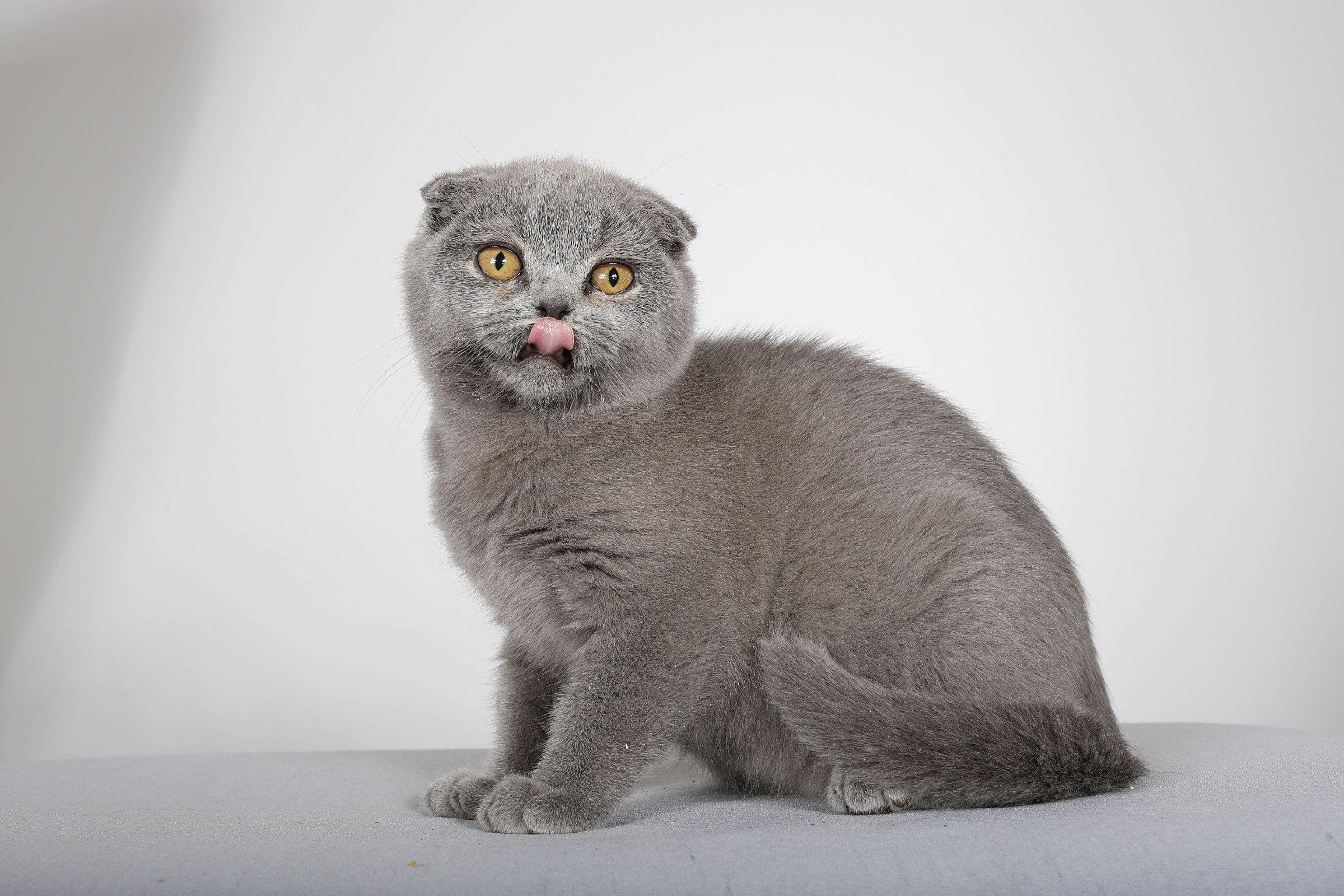
Daily Care Considerations
Scottish Fold cats require daily care specific to their special physical requirements. Their folded ears and joint predispositions translate into a few additional steps to keep them comfortable and healthy. Below is a checklist with core care tasks:
- Brush long-haired Scottish Folds 2-3 times weekly. Short-haired cats require weekly combing to reduce shedding and mats.
- Bathe only as needed to prevent drying their skin. Be sure to always use a gentle cat shampoo.
- Arrange daily play sessions with interactive toys such as feather wands or laser pointers to keep them stimulated but not exhausted.
- Clean their teeth weekly to prevent dental disease.
- Offer a protein-rich diet to support muscle health.
- Keep indoor areas during warm months as cool as possible and provide access to clean, fresh water at all times.
- Tweak for senior cats – opt for gentle, low impact play and extended rest times.
- Examine their ears every week for dirt or infection.
Mobility Support
Scottish Fold cats tend to become stiff in their joints with age, so they require extra attention when it comes to being mobile.
Set up ramps or pet stairs next to beds, sofas or window perches to ease them into climbing without strain. Soft mats and rugs provide additional traction and padding. Clear sharp or hard objects from play areas. Monitor them at play, and use soft games to minimize the chance of joint stress. Be on the lookout for limping or unwillingness to move, as these can indicate pain.
Ear Hygiene
- Examine ears weekly for wax, redness or fowl odor.
- Take a soft, wet washcloth or cotton pad and lightly cleanse the outer ear-never work anything deep down into the ear canal.
- Wash only what you see, and cease if your cat appears disturbed.
- If you notice swelling, discharge or odors, contact your vet for guidance.
Scottish Fold cats’ folded ears can trap a lot more dirt and moisture than their straight-eared counterparts, making them more vulnerable to infection. Daily mild cleansing wards off deposits. Dry ears THIS WELL after washing or baths.
Veterinary Monitoring
Regular veterinary care is a must for this breed as well. Vets monitor joint health, ear condition and overall wellness. Bring your cat in for annual checkups, or every six months for seniors. Emphasizing the fact that early checks catch problems such as ear infections or joint disease before their progression. By building a trusting relationship with your vet, you’ll receive straightforward advice and feel confident about your cat’s care.
Our Aesthetic Obsession
Scottish Fold cats are characterized by their unique folded ears and round faces, making them irresistibly cute. Their distinctive appearance, scarce availability and amiable disposition made them one of the most coveted breeds around the world. While we might be mesmerized by their look, this aesthetic obsession raises serious questions about how we prioritize beauty in our pets and what it means for their well-being.
The “Cute” Factor
That cute factor is a big part of why so many people crave a Scottish Fold. Their floppy ears, big eyes and velvety faces instantly give them a cartoon-like appeal, a charisma that’s only intensified by social media and marketing. Photos and videos of these cats viral-ize, propelling their fame ever higher.
The breed’s backstory is included in their charm. Scottish Folds were only discovered as recently as the 1960s, which made them rare and mysterious. While some think their forefathers hail from China, which makes it even more exotic. Though their looks make them easy to love, good ownership means looking beyond the surface. Health should always be number one, even if a breed is as adorable as the Scottish Fold. Anyone considering getting one should hear about the health problems associated with the breed’s distinctive characteristics.
A Human-Made Problem
Selective breeding is behind the folded ears of Scottish Folds. The fold is due to a genetic mutation, however this same mutation can lead to joint and cartilage issues. Breeders are a big part of these results. Good breeders health test parent cats and never breed two Folds together, since this can heighten the risk.
So education is crucial. Most people don’t realize that the adorable aesthetic carries genetic hazards. Breeders, owners and breed enthusiasts must remain educated and choose to put the cats’ welfare first. If we’re lucky, we will have happy, healthy cats and not just pretty faces.
Redefining Beauty
Pet beauty needs to be about more than looks. A healthy, active cat with a great quality of life is so much more gratifying than a sick one with a hip look. By prioritizing health instead of newness, we’re providing pets with a greater opportunity for joyful lives.
Learning can precipitate this transition. Speaking candidly about the breed’s health risks, sharing the facts and backing quality breeding will help change what we view as beautiful in all cats.

